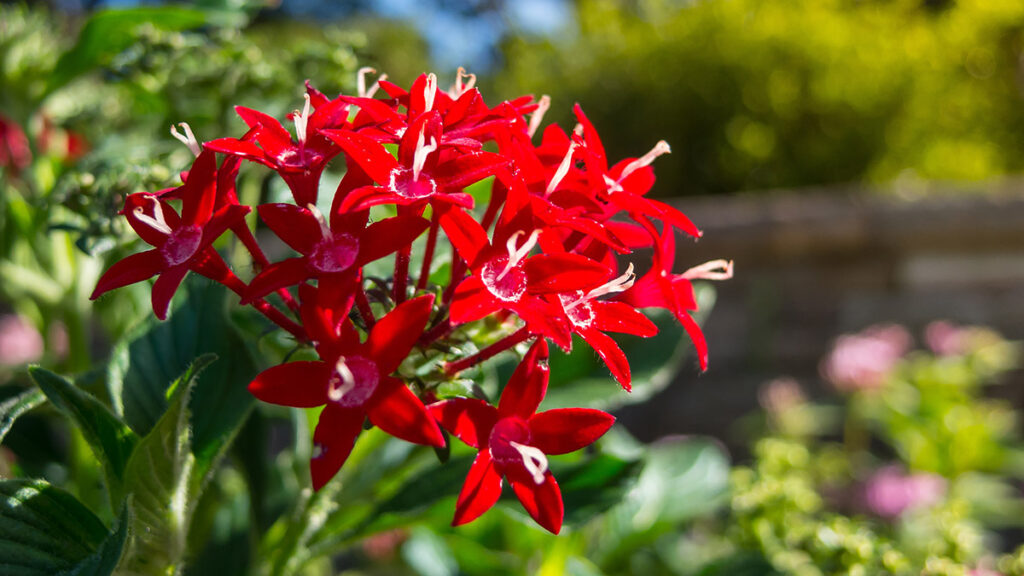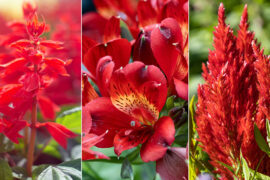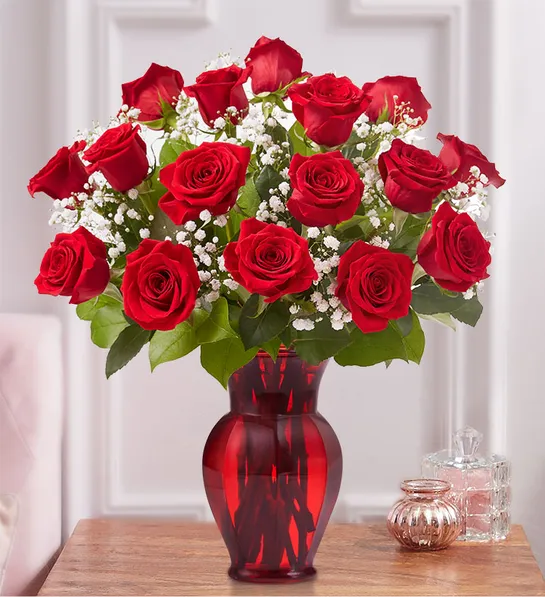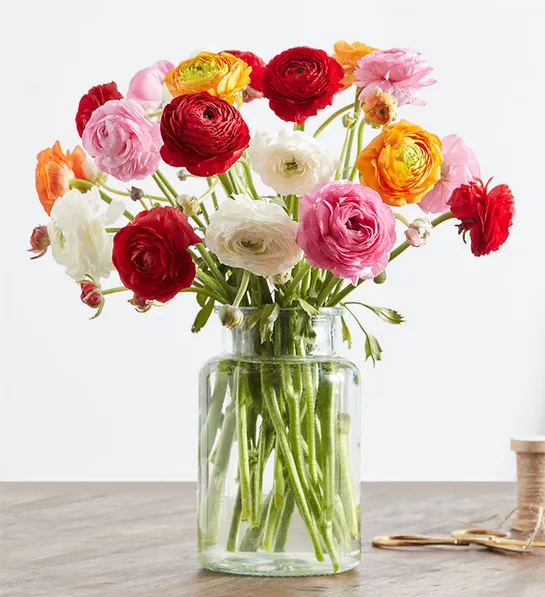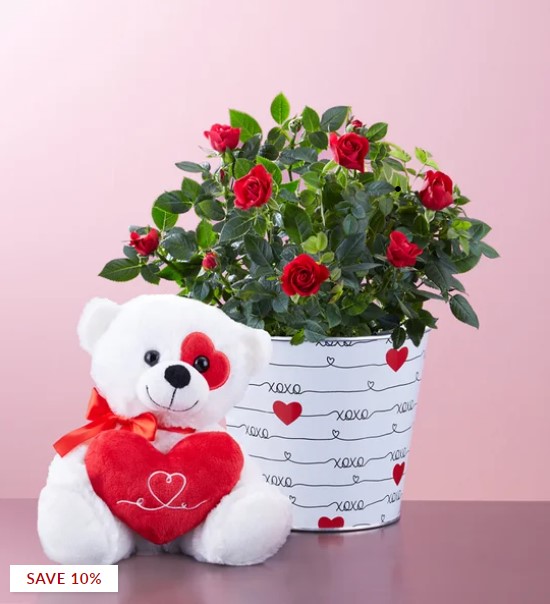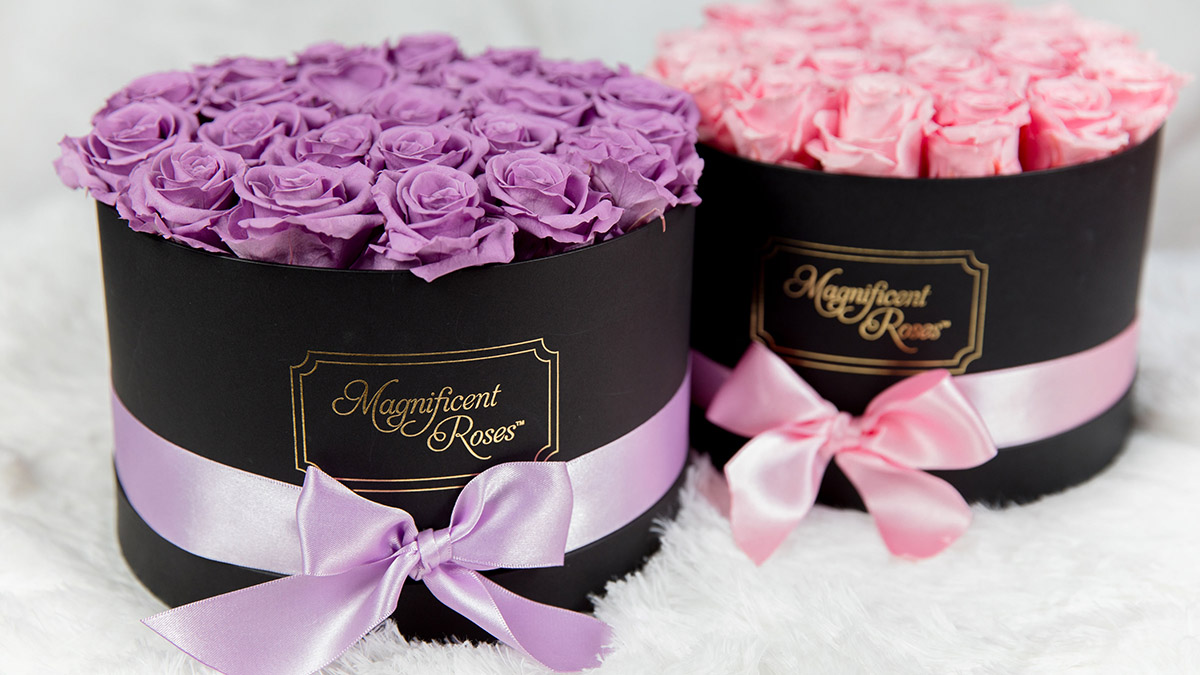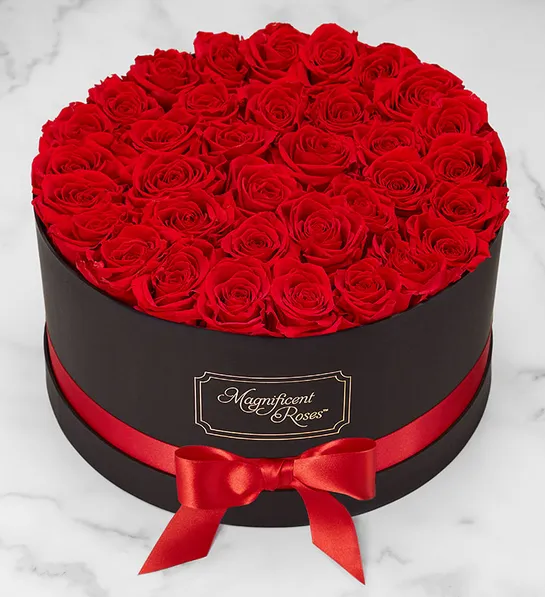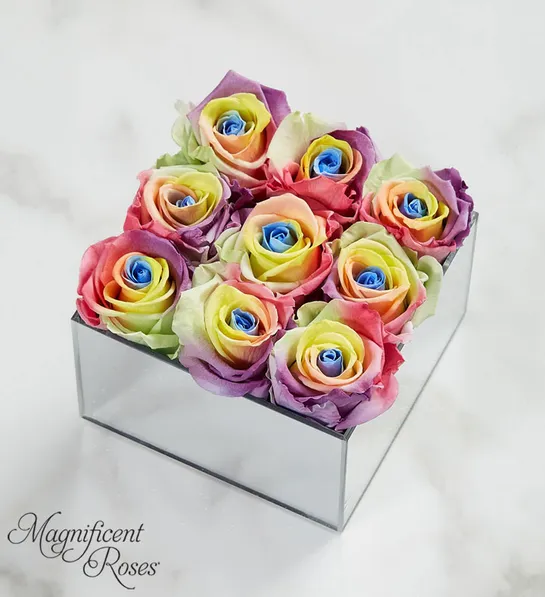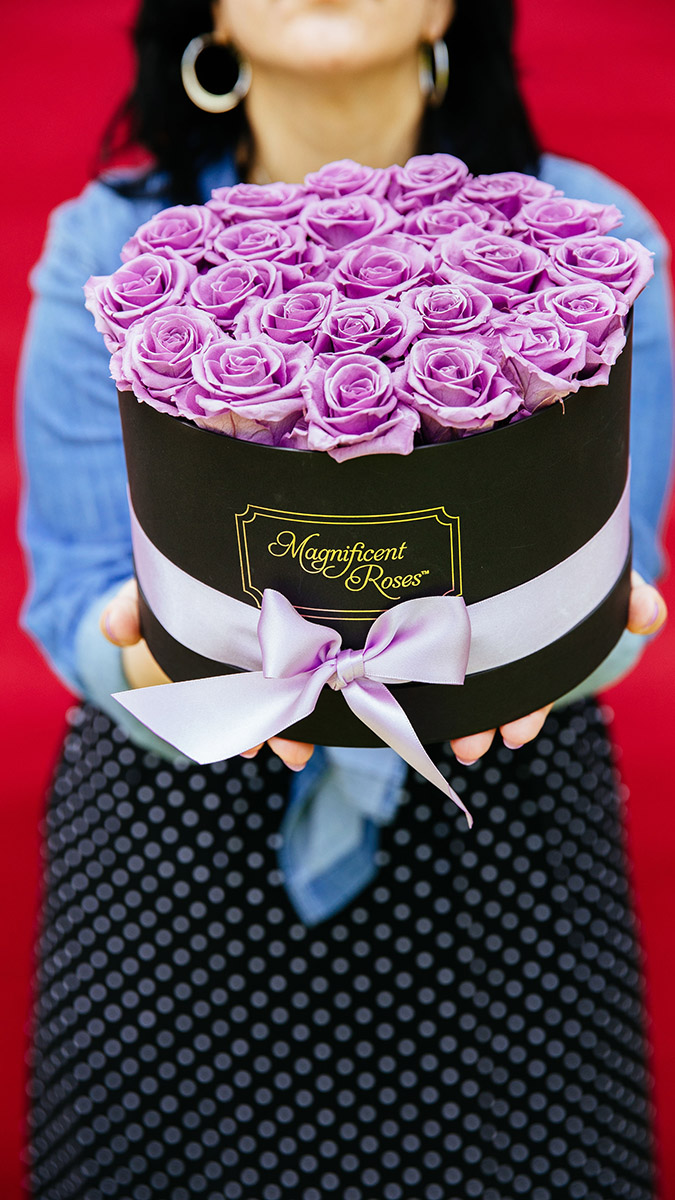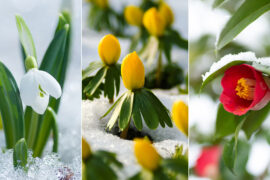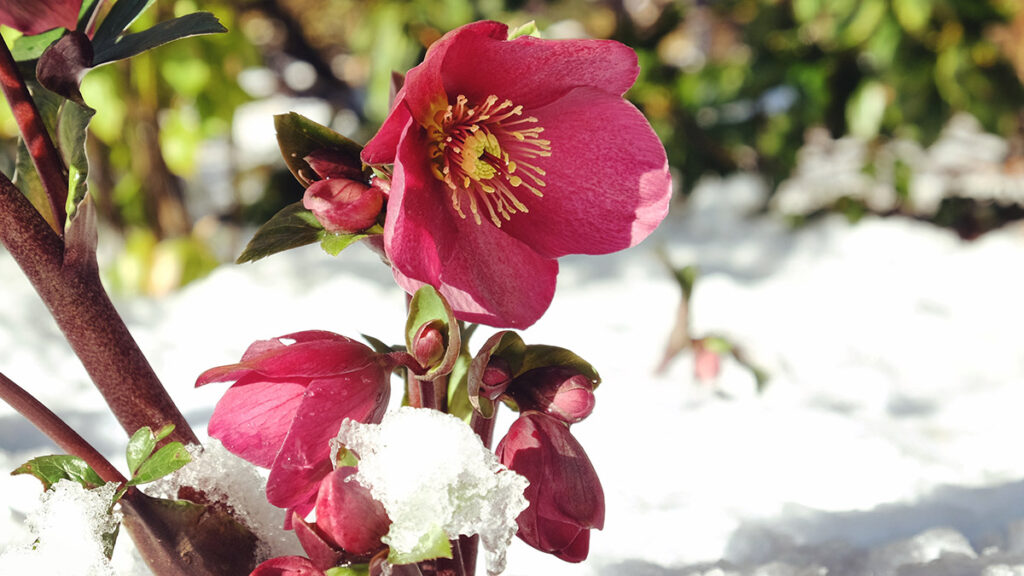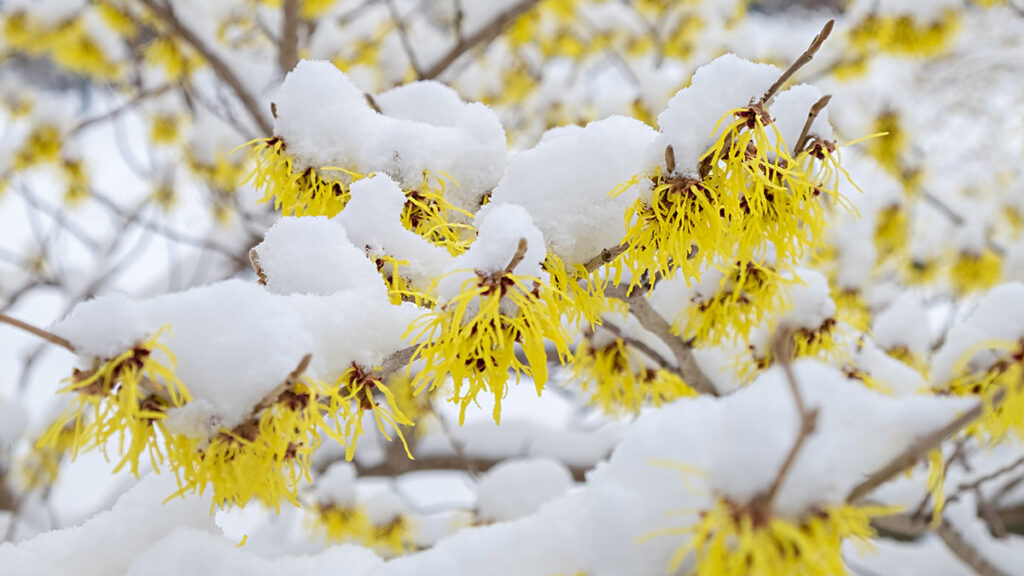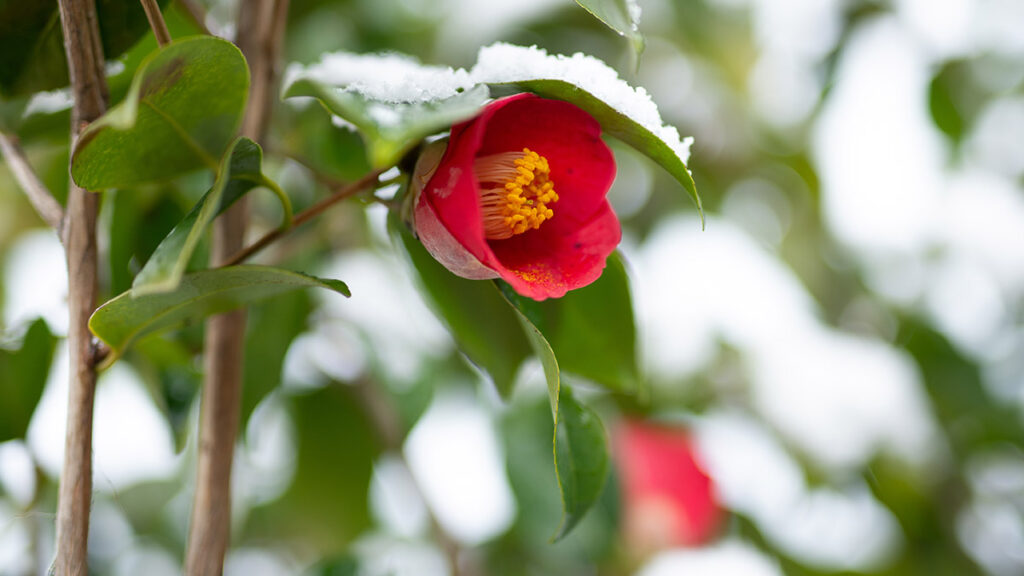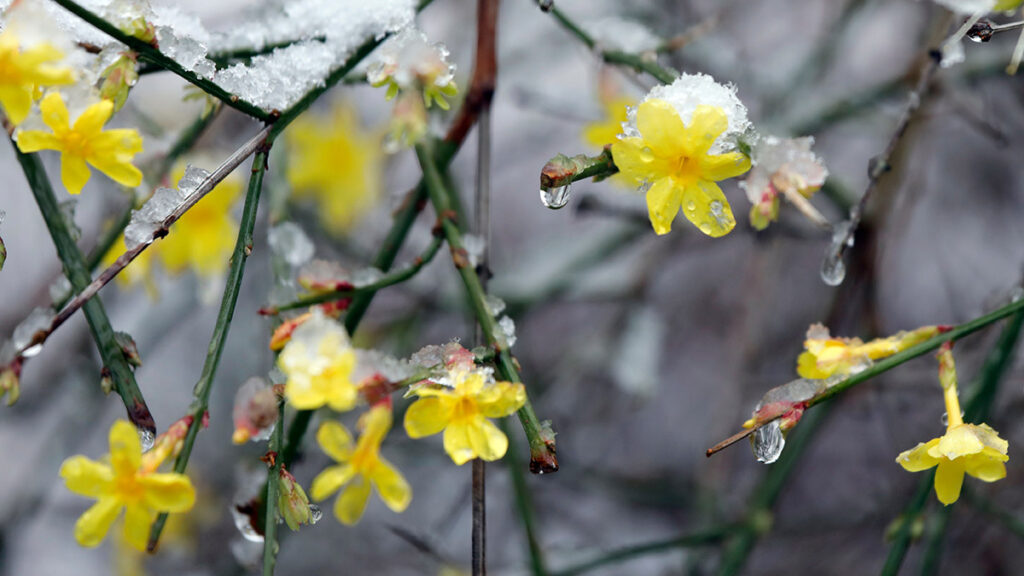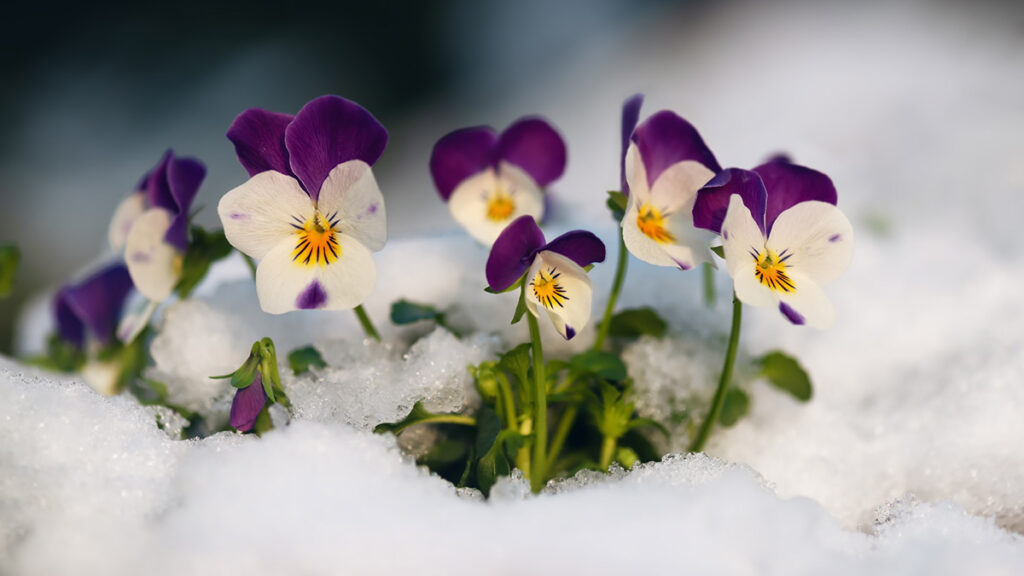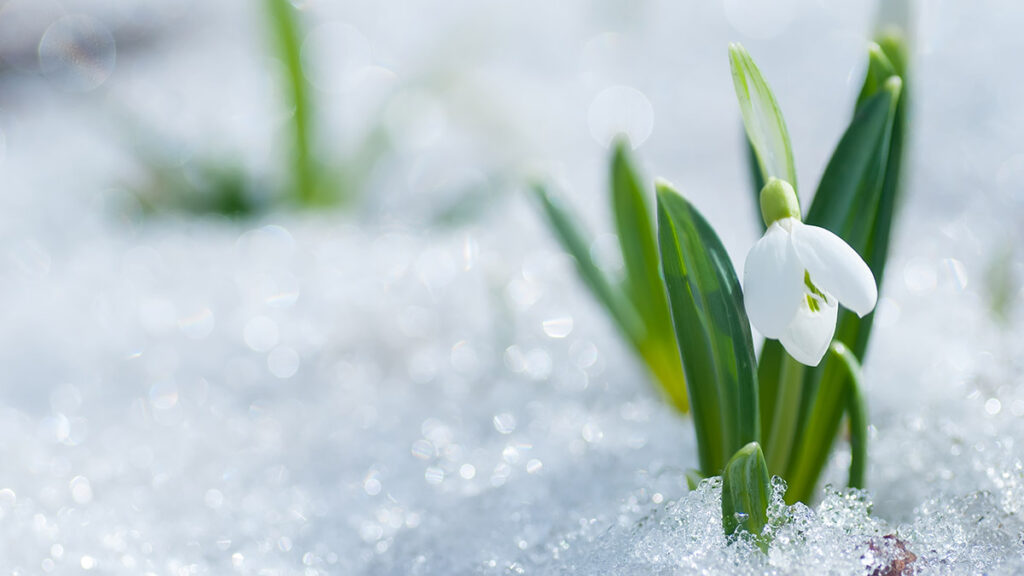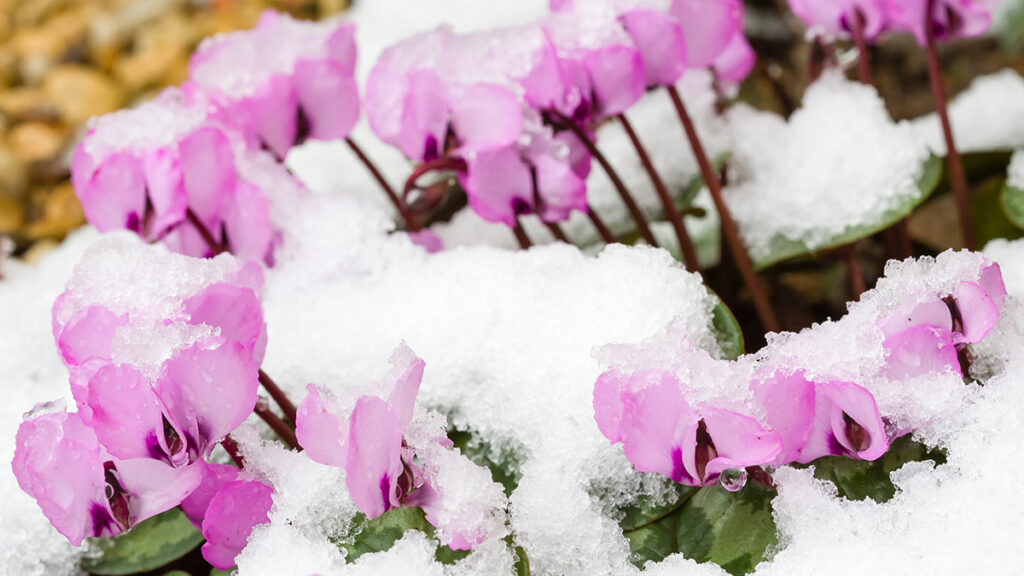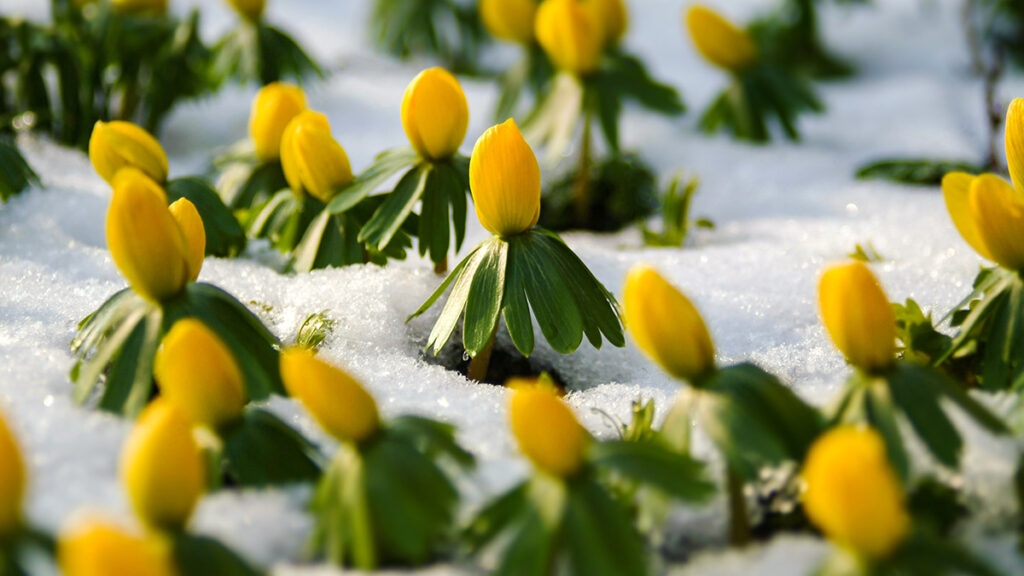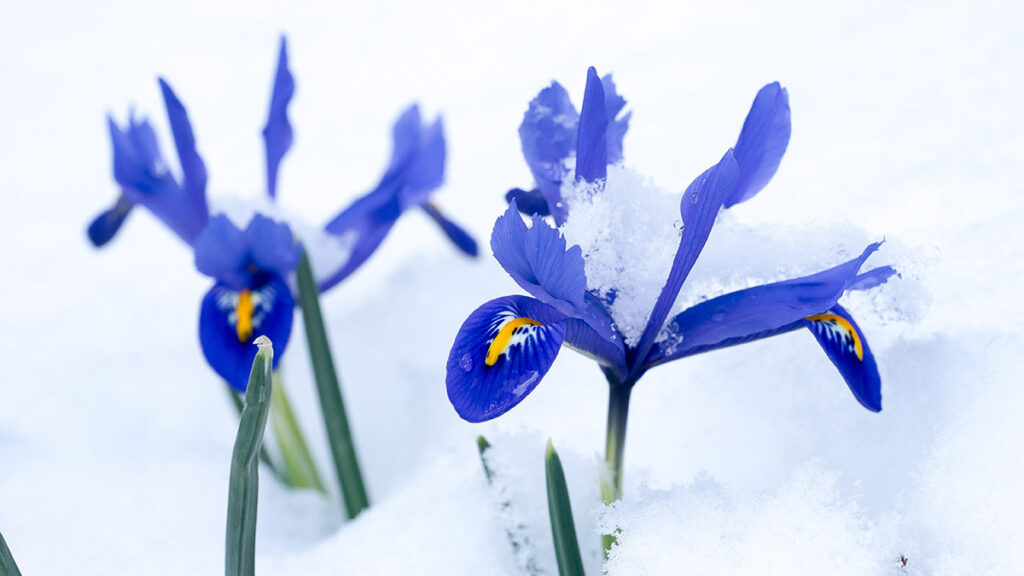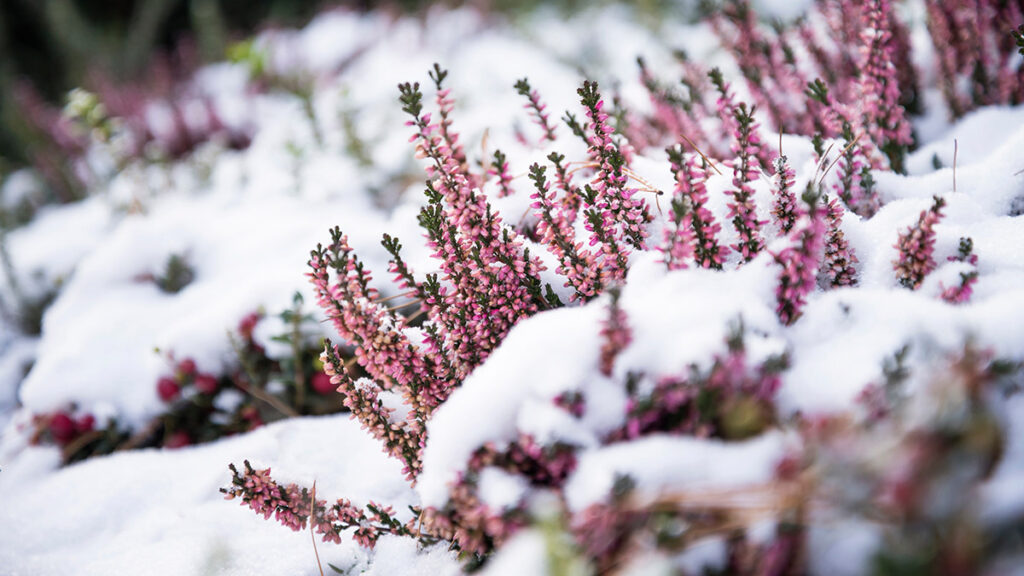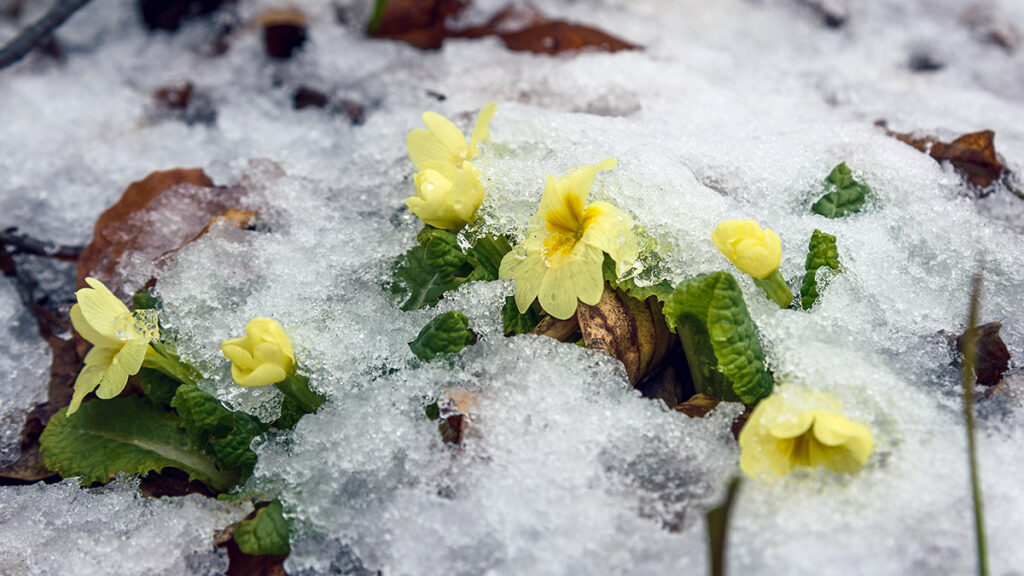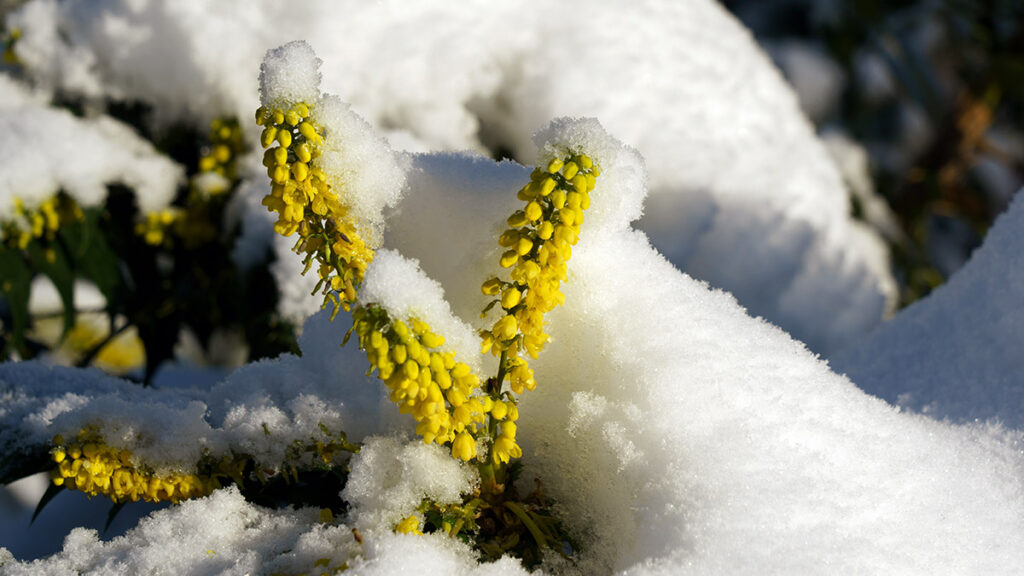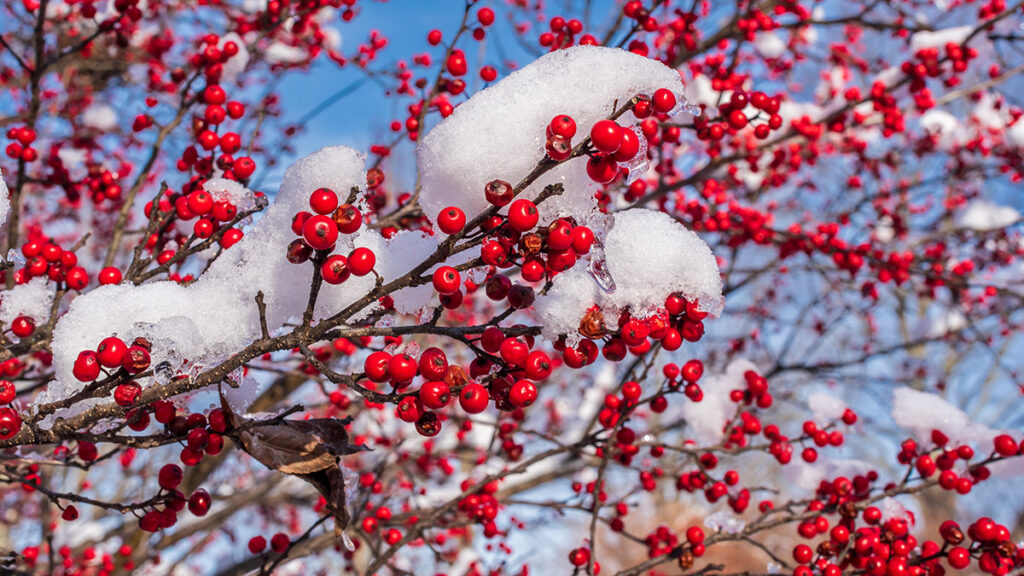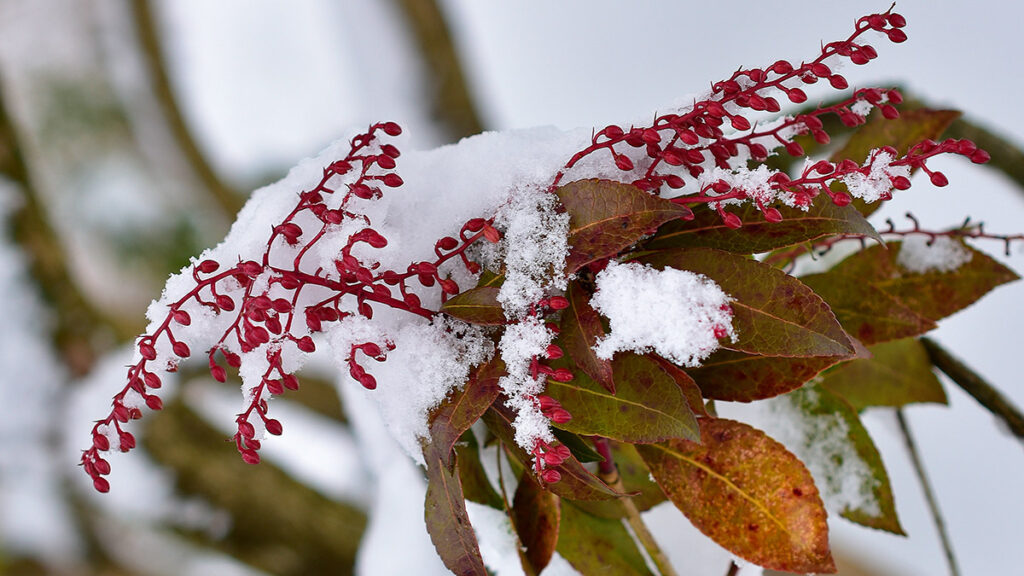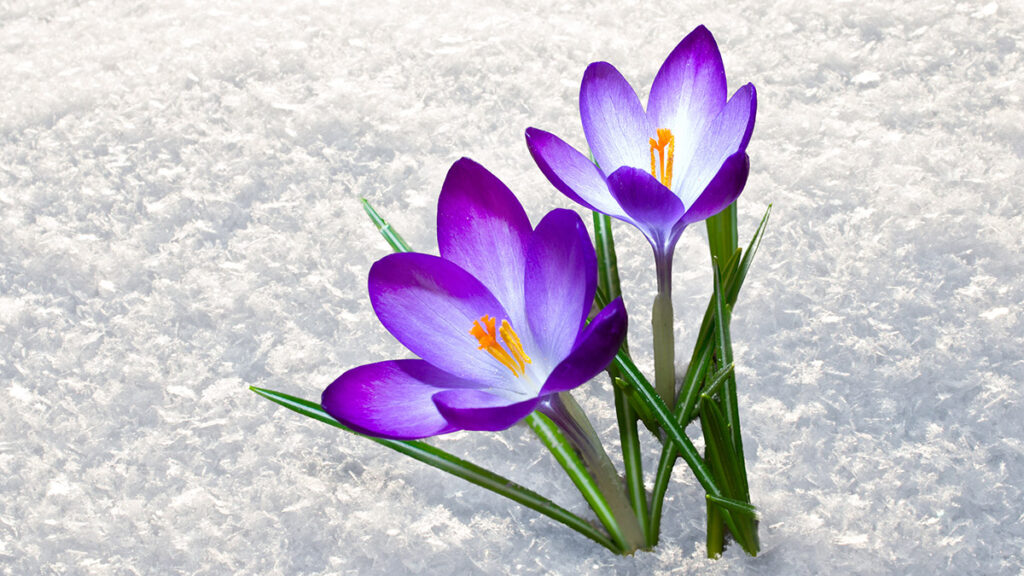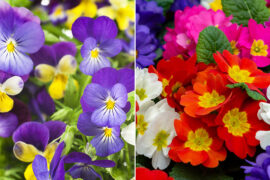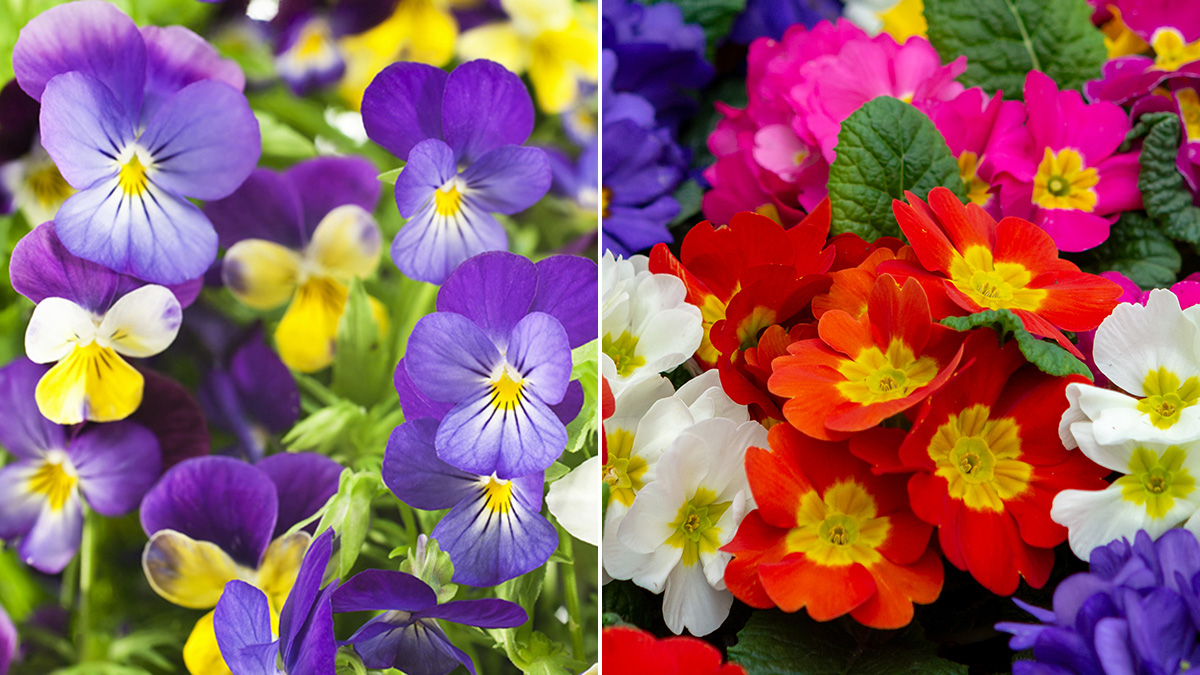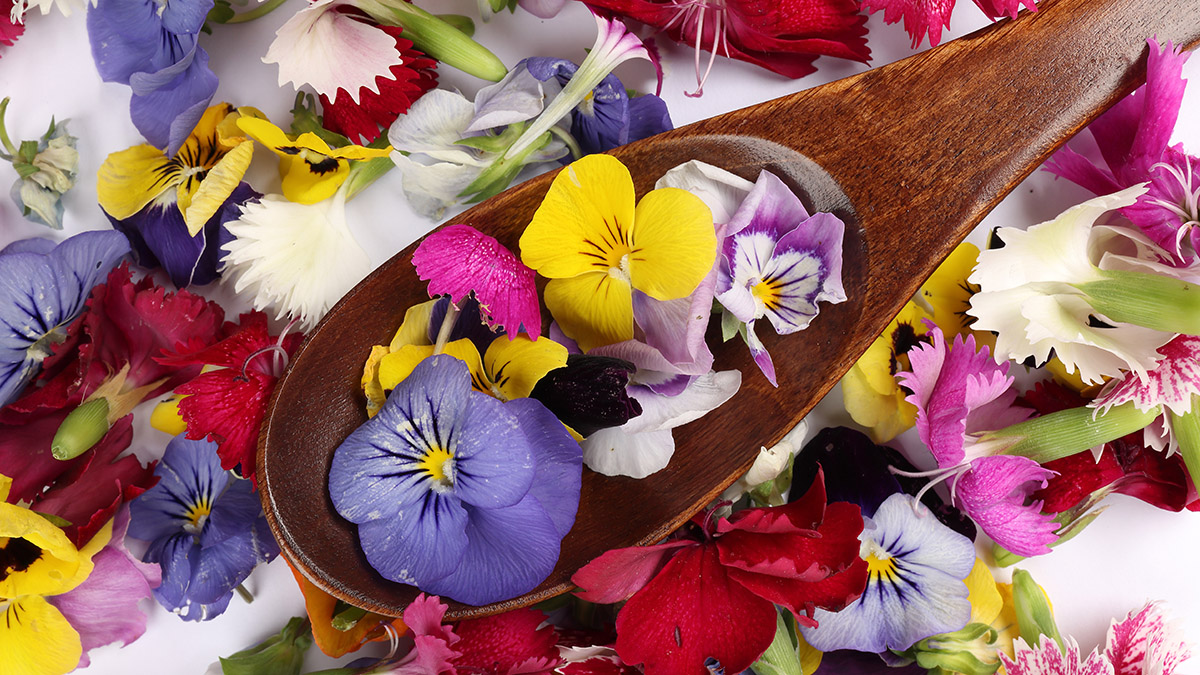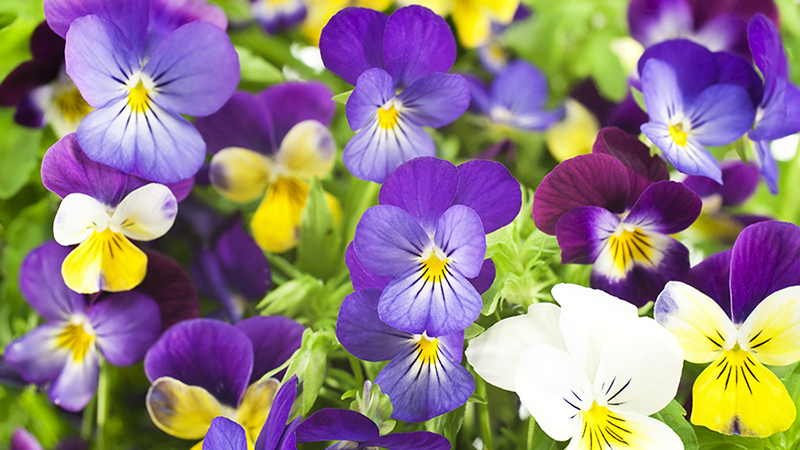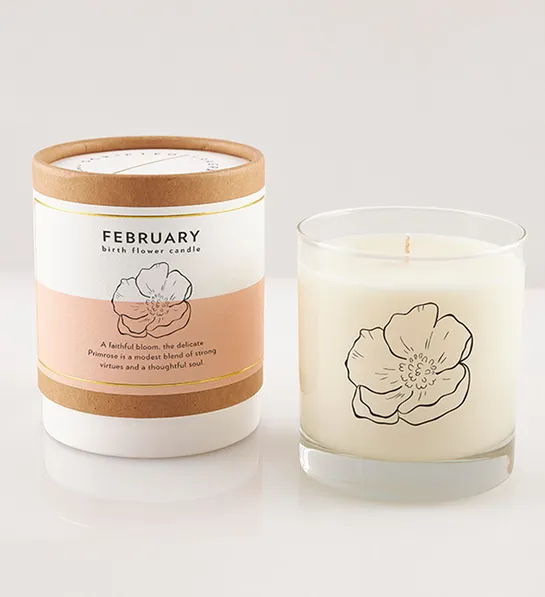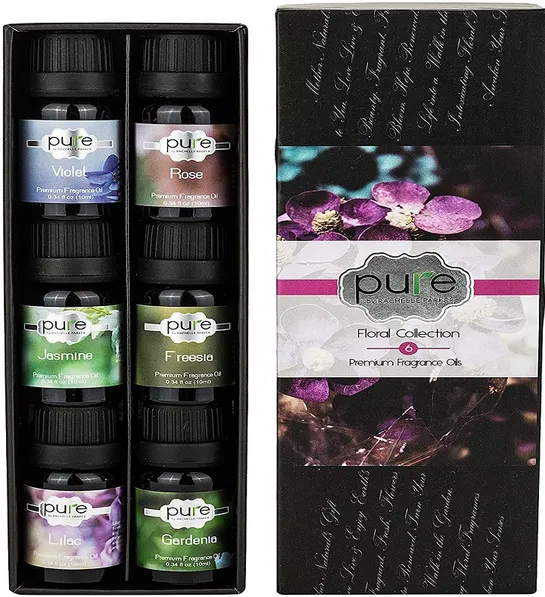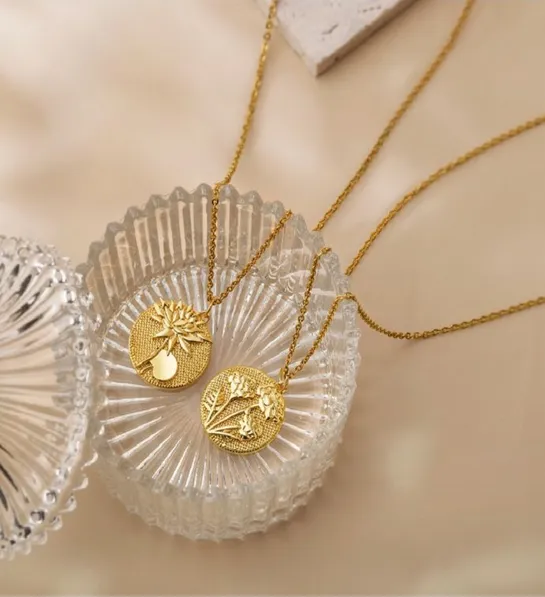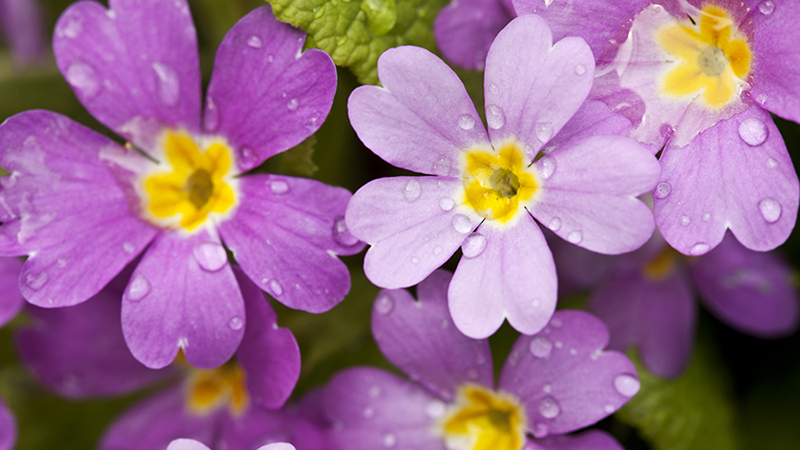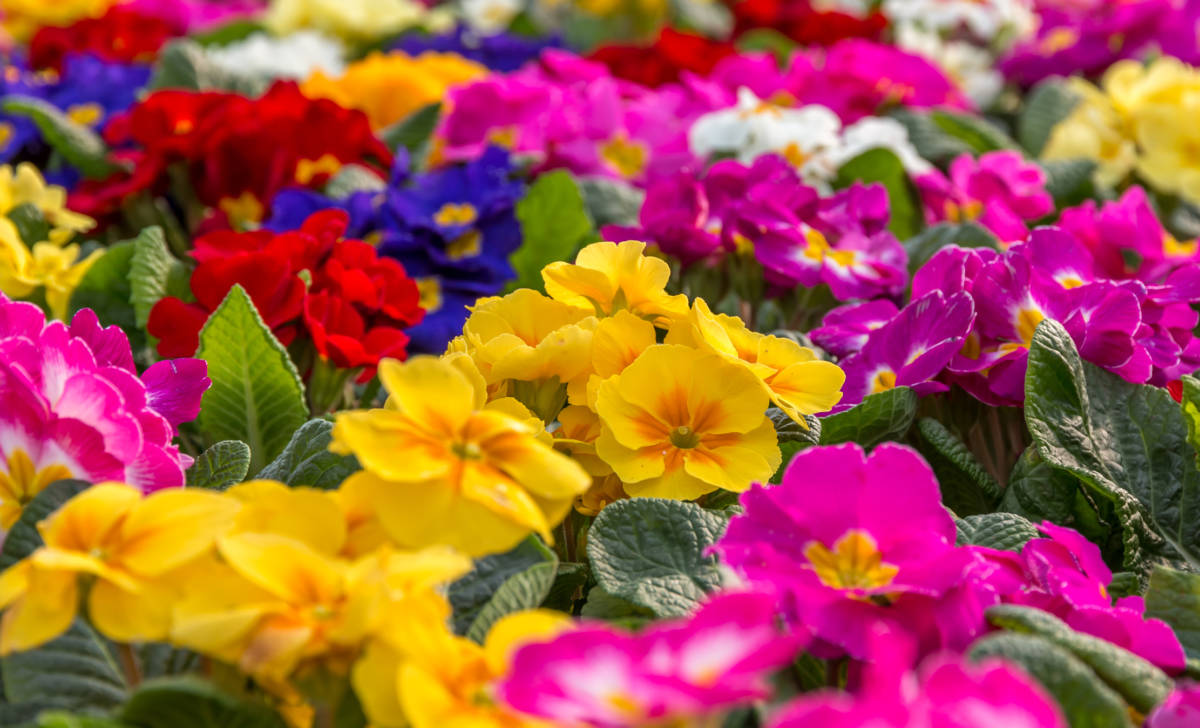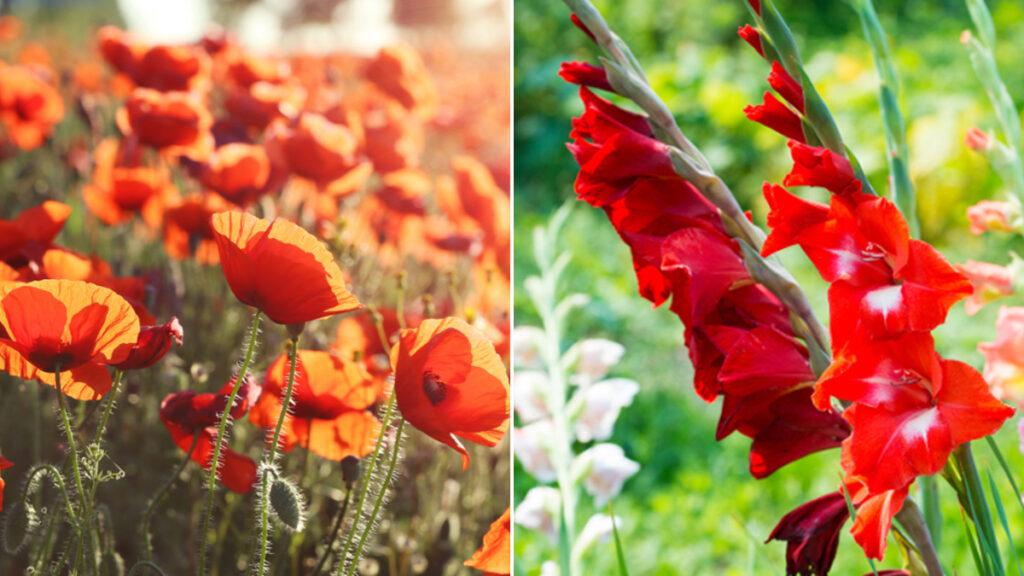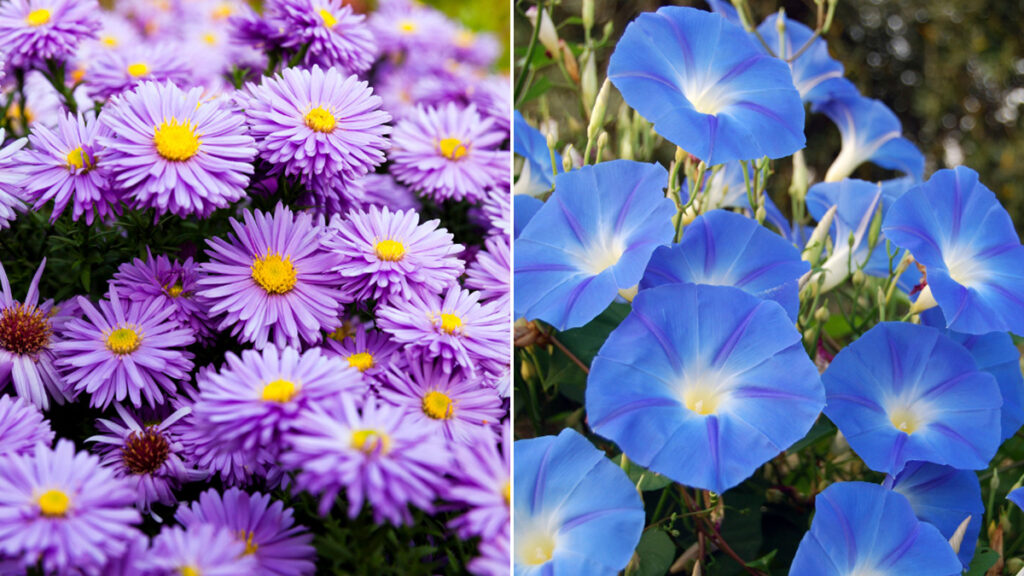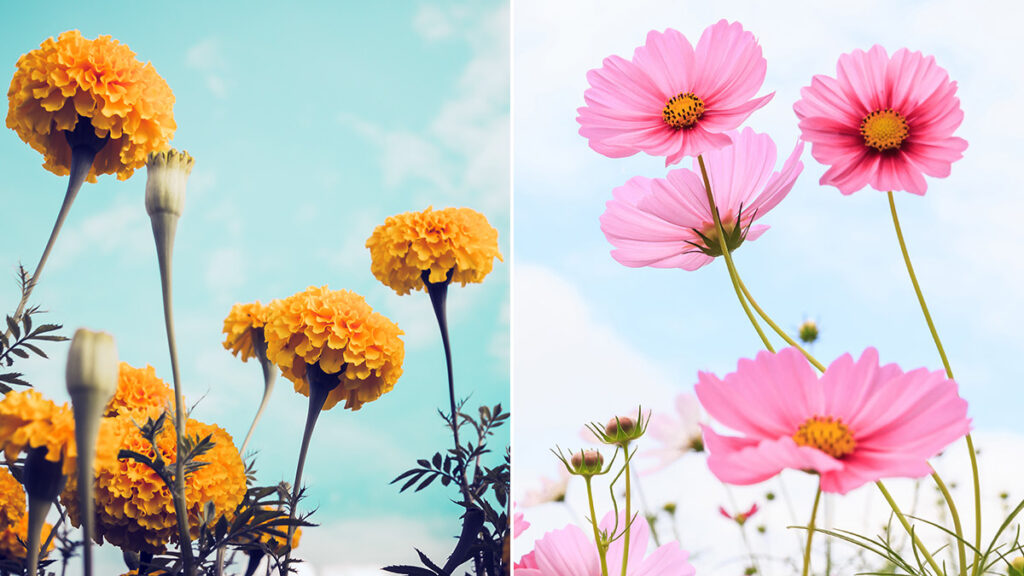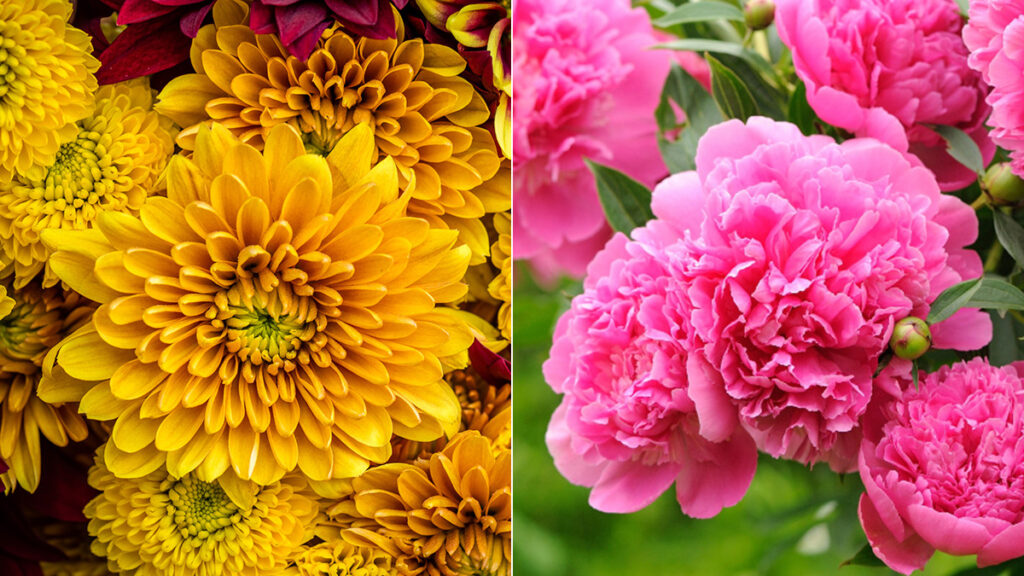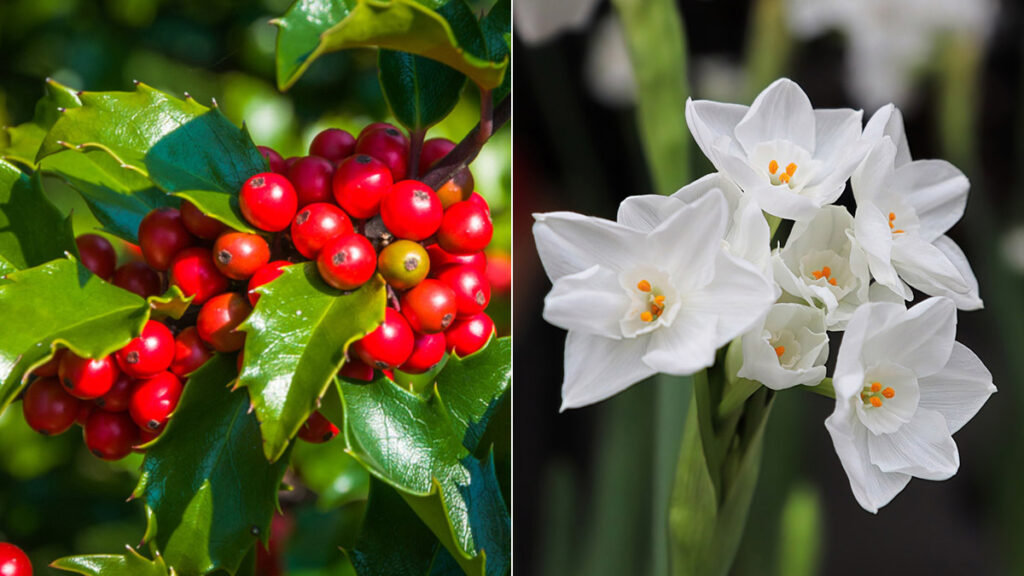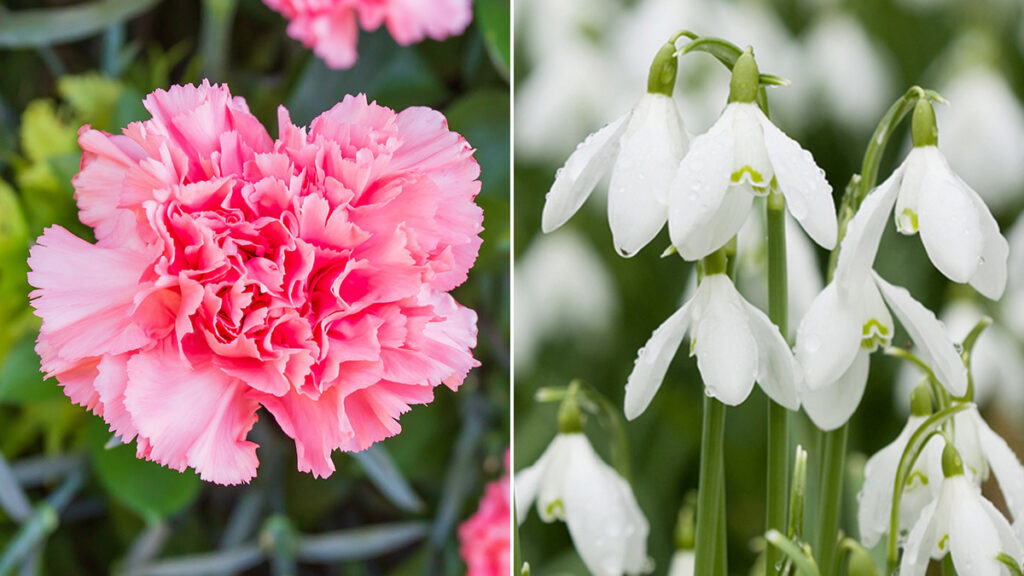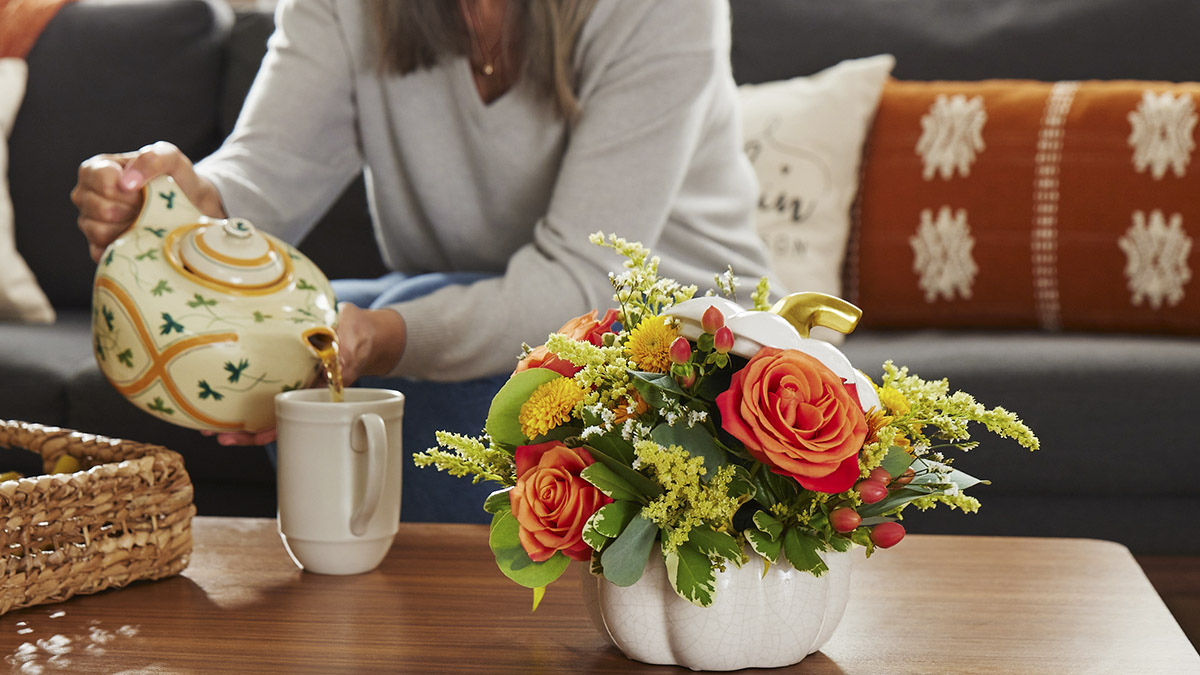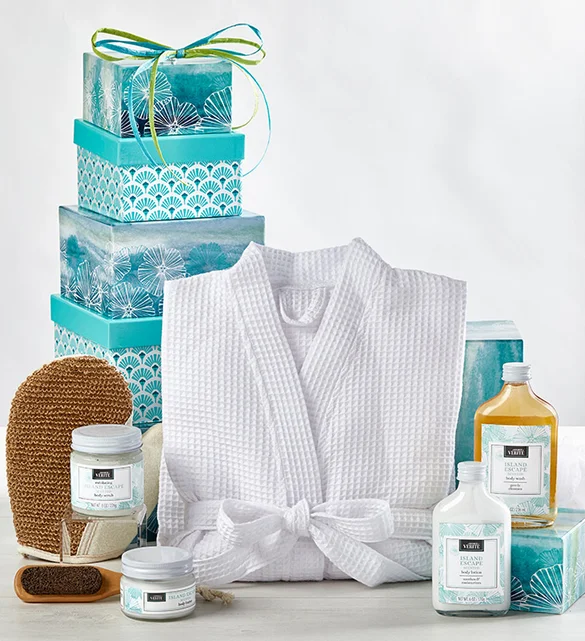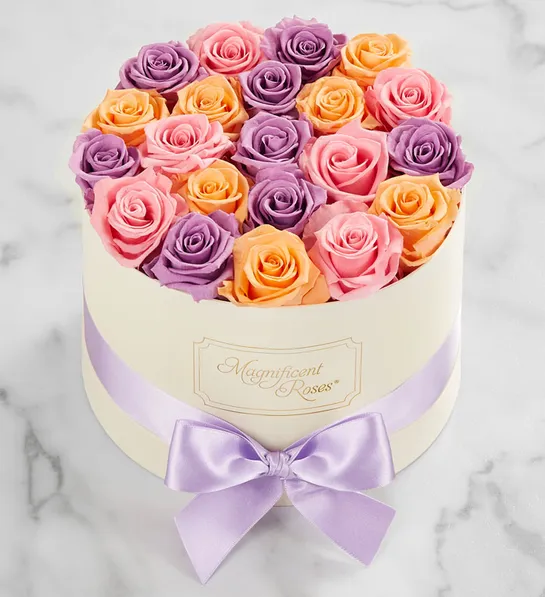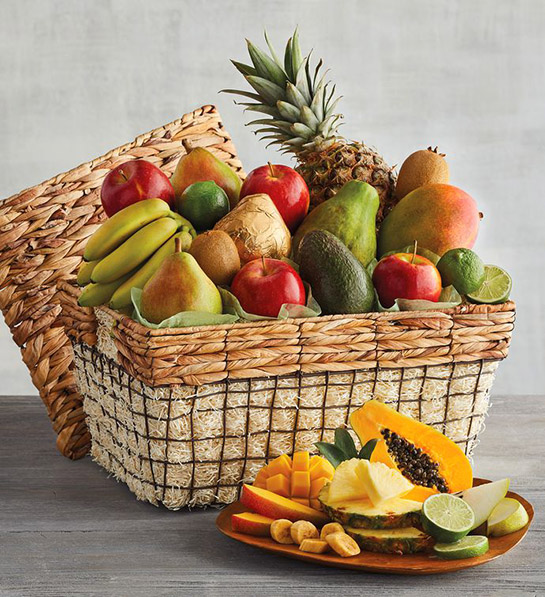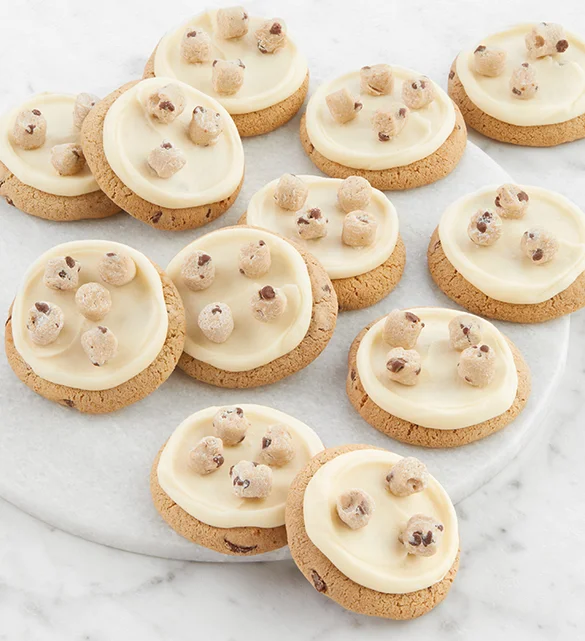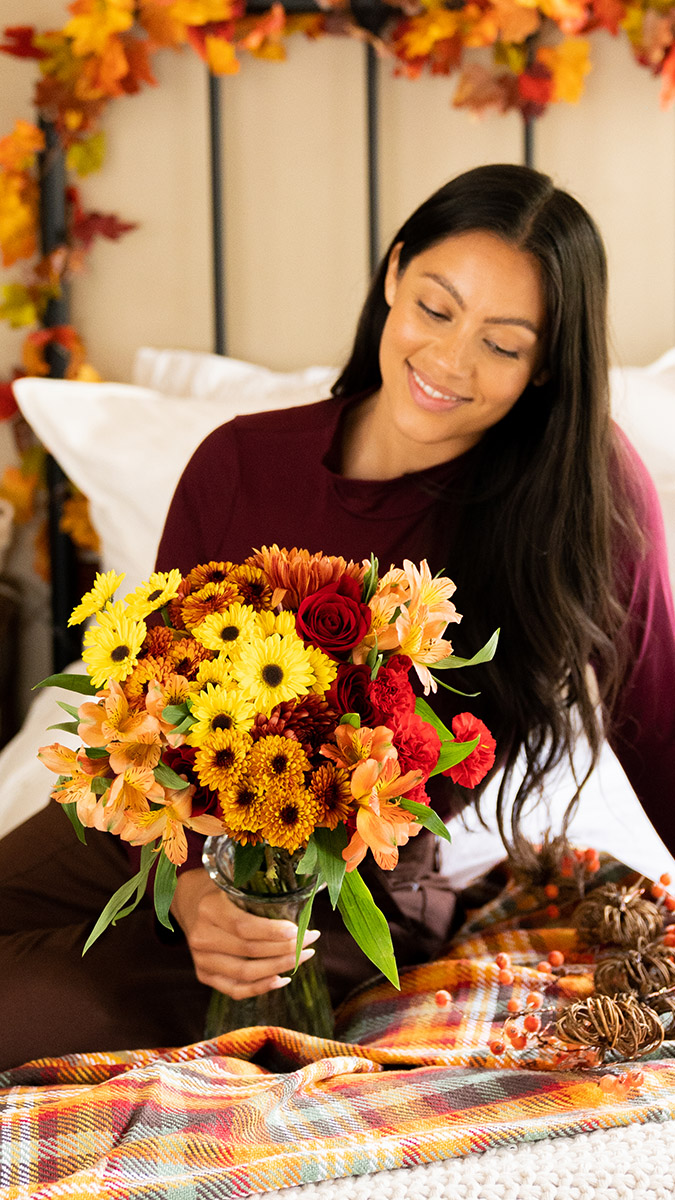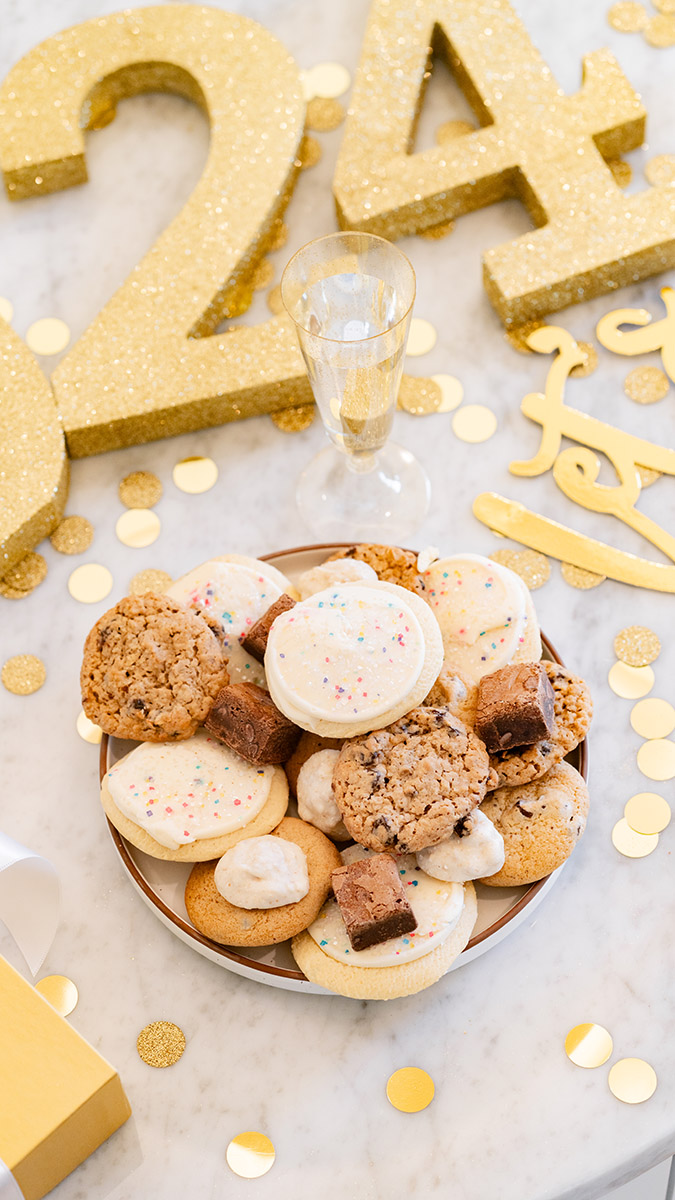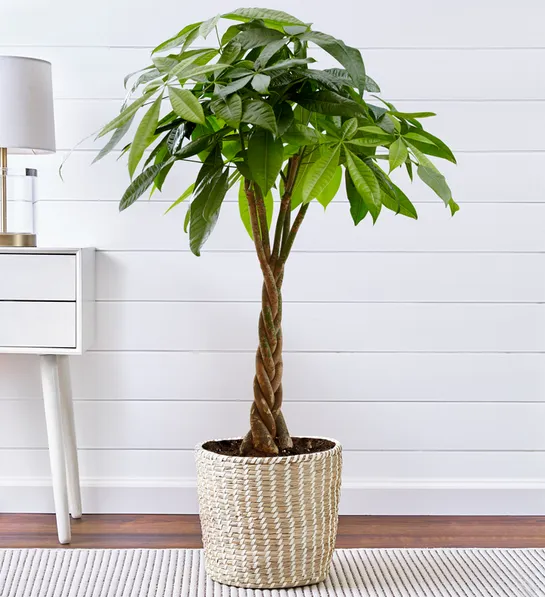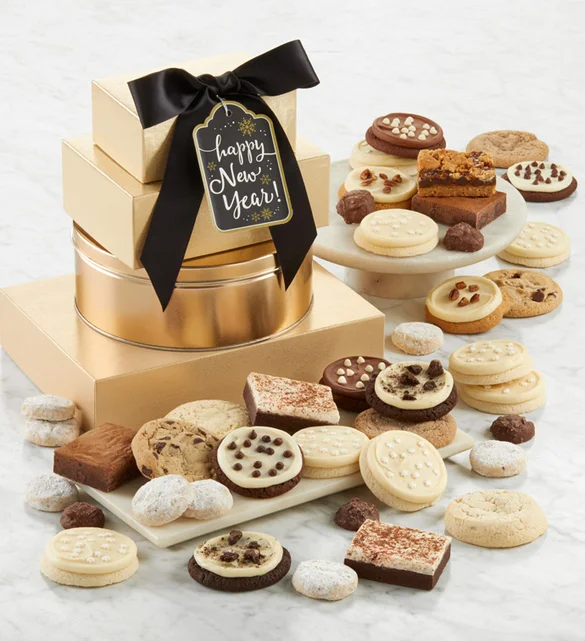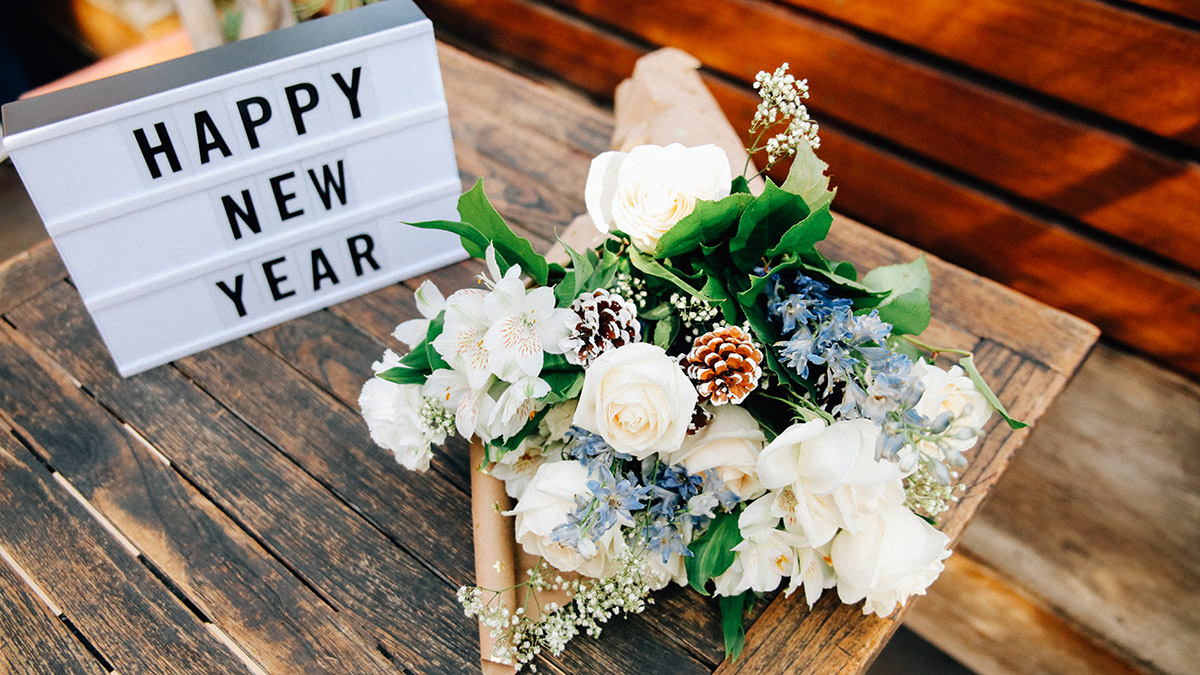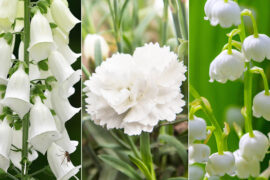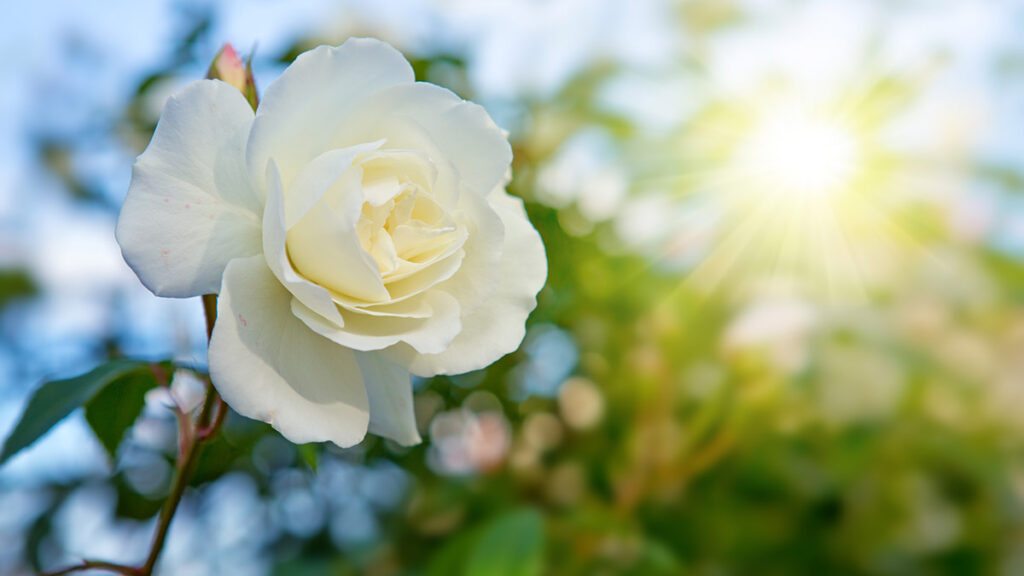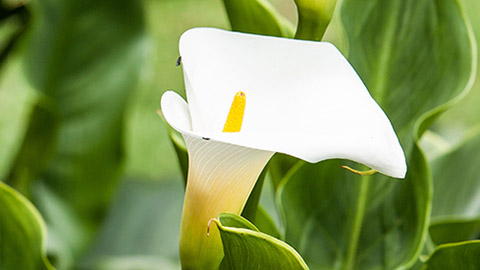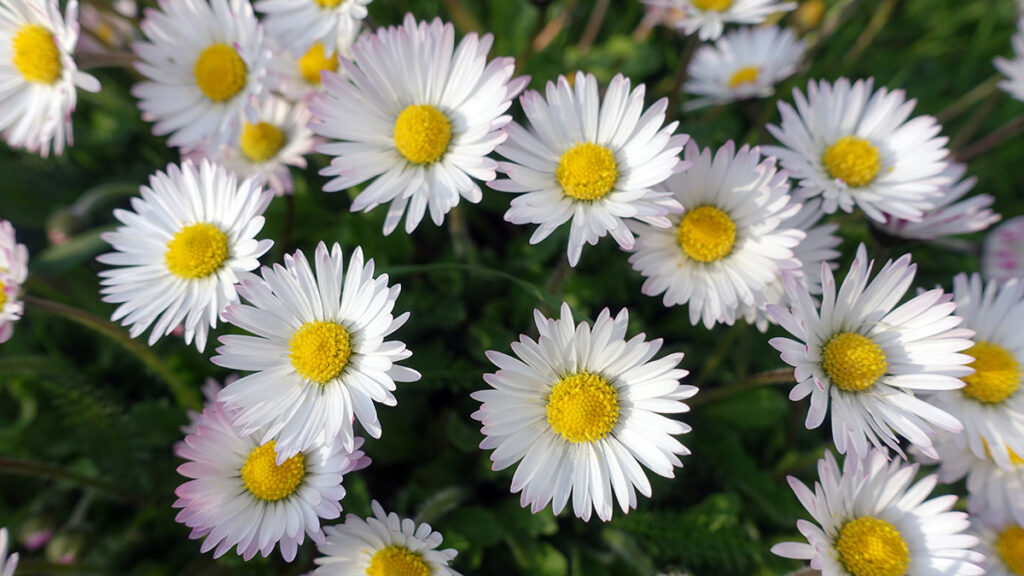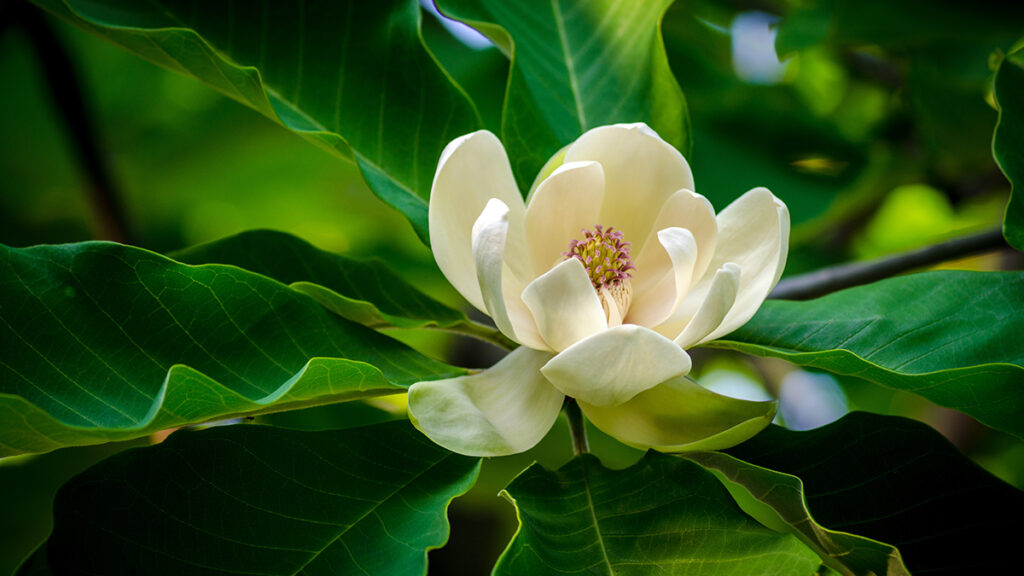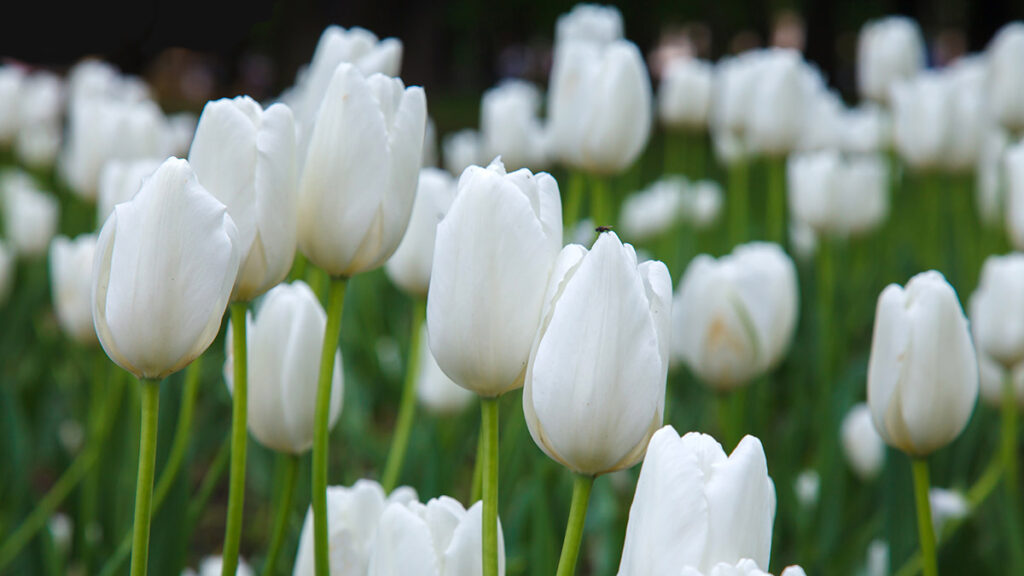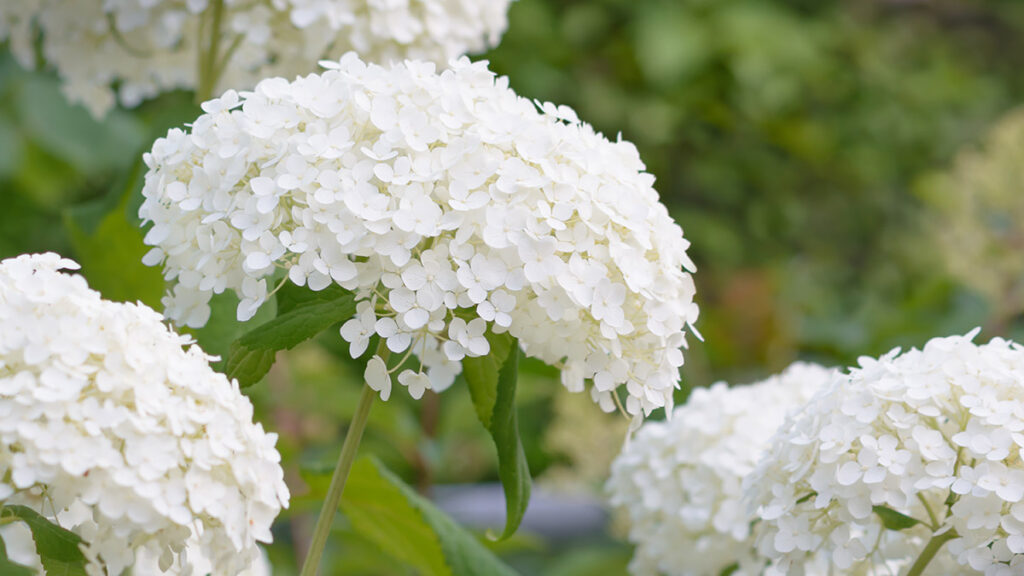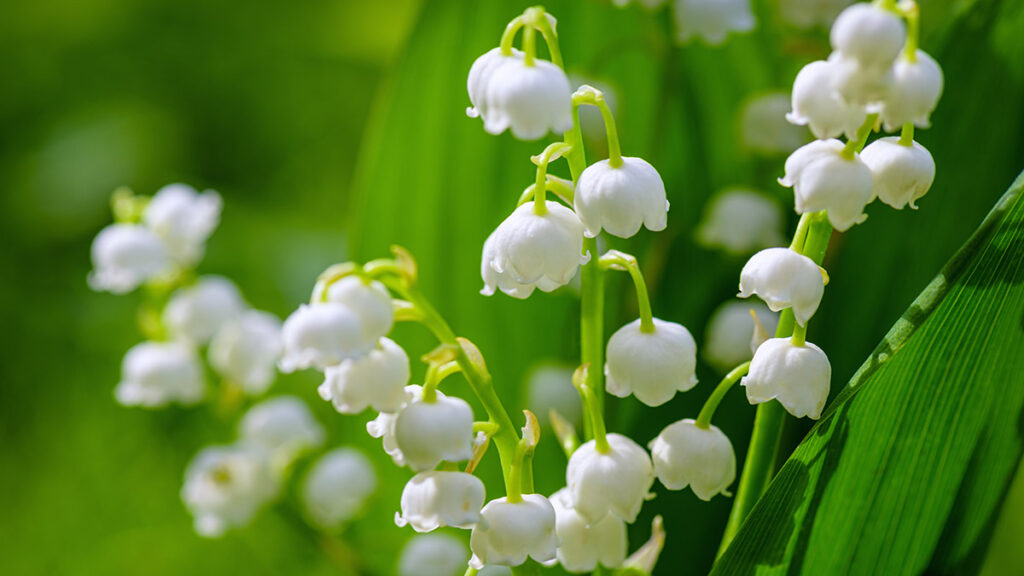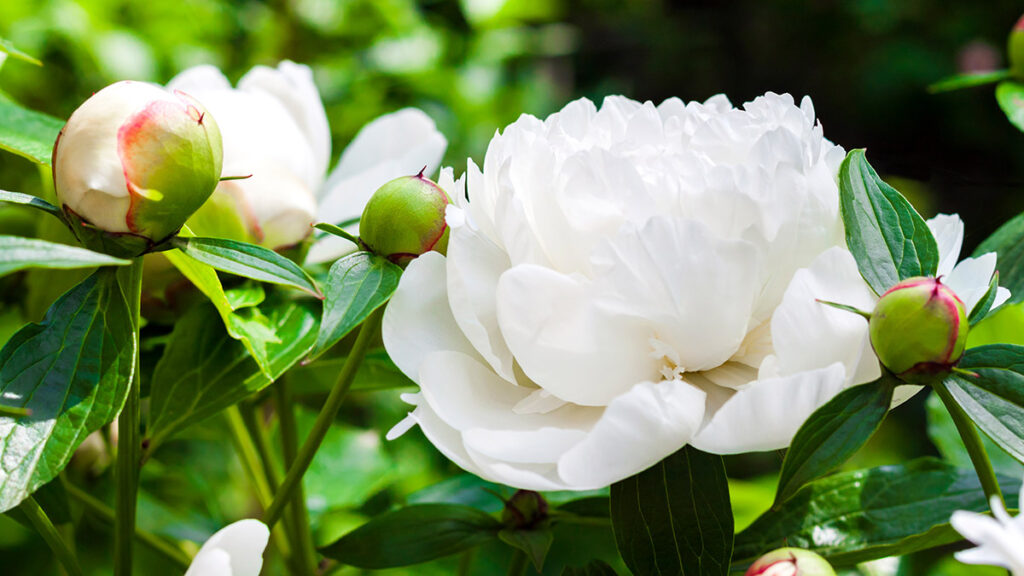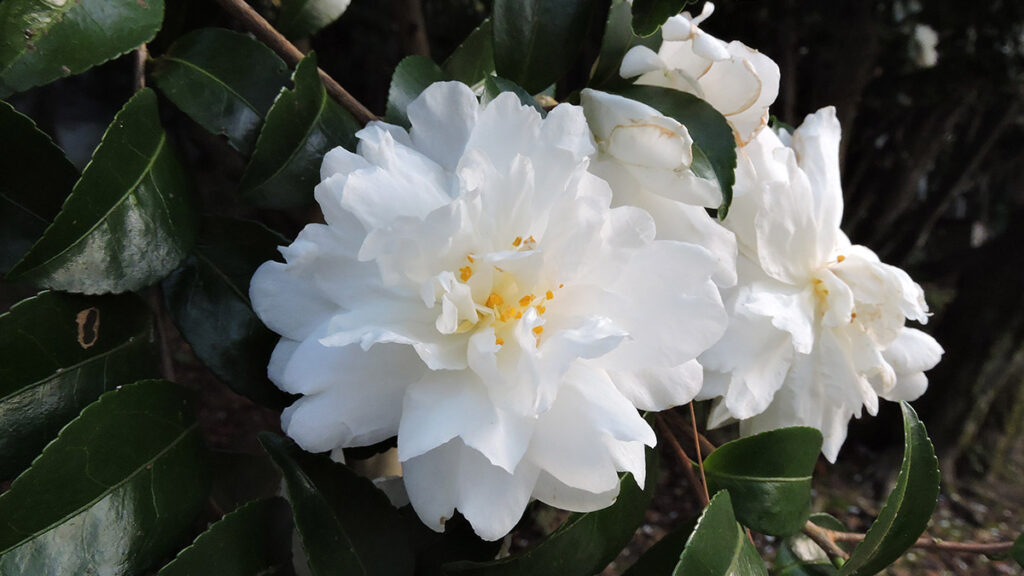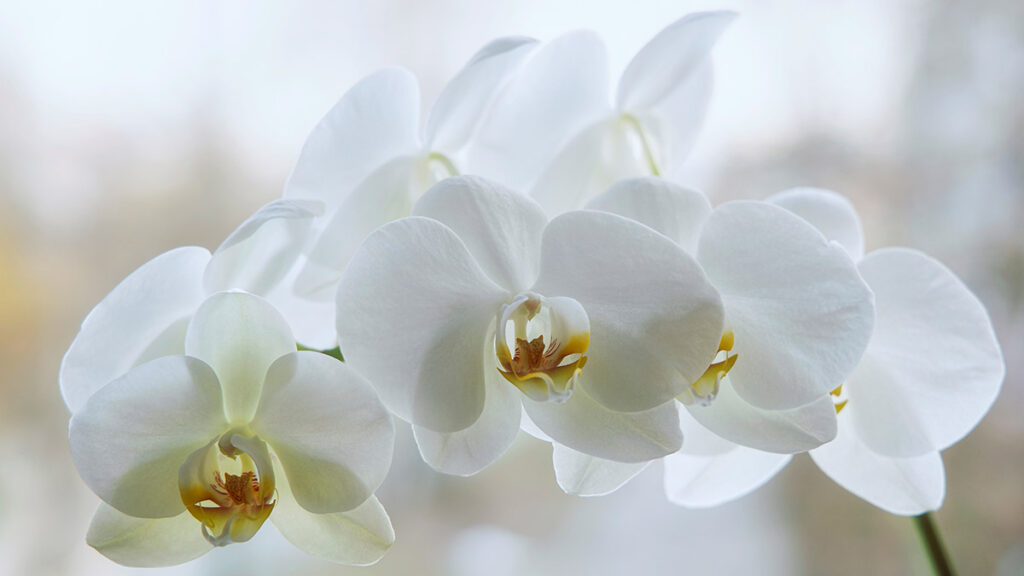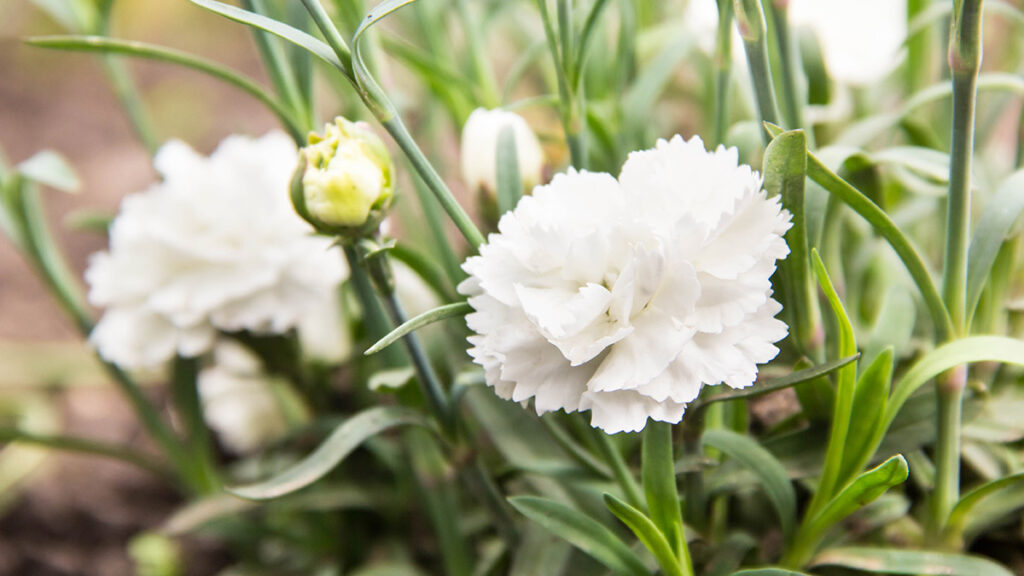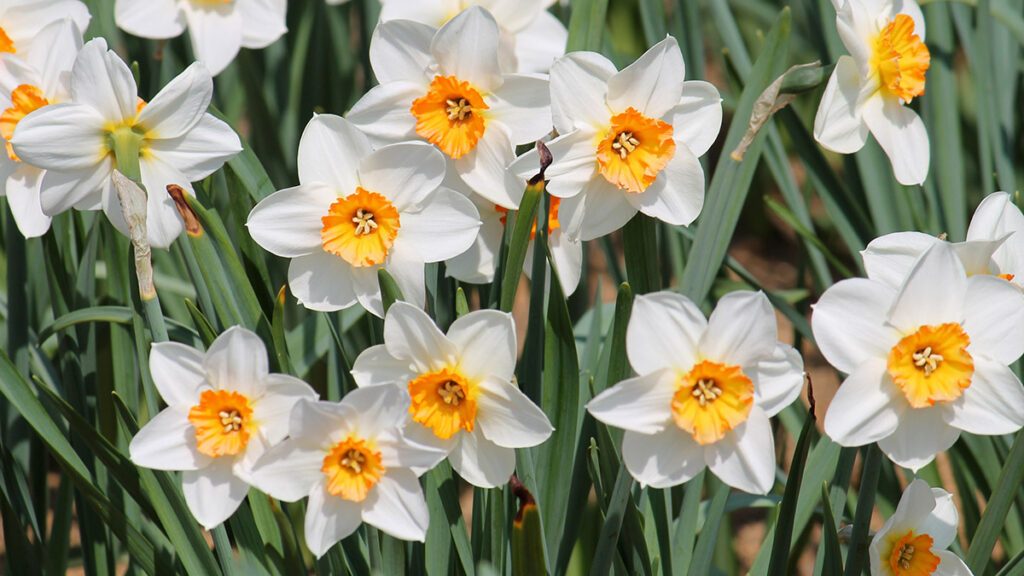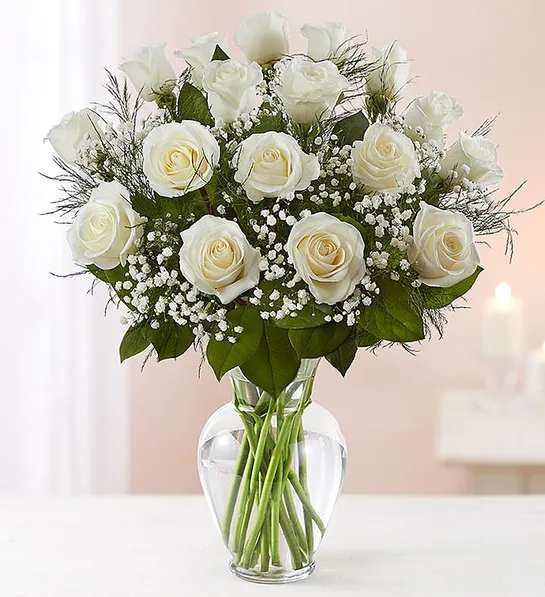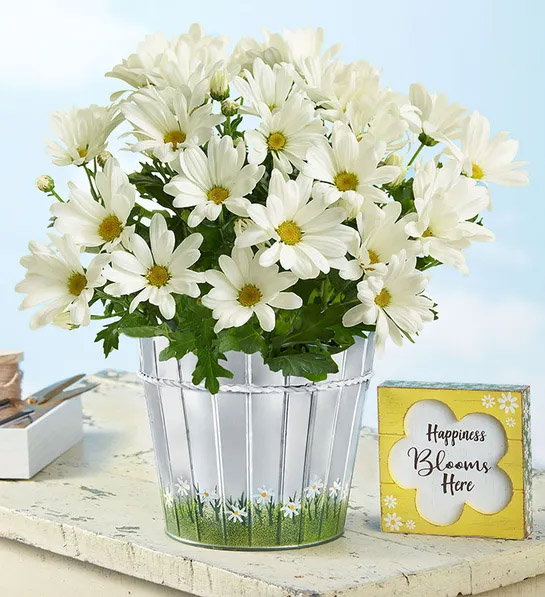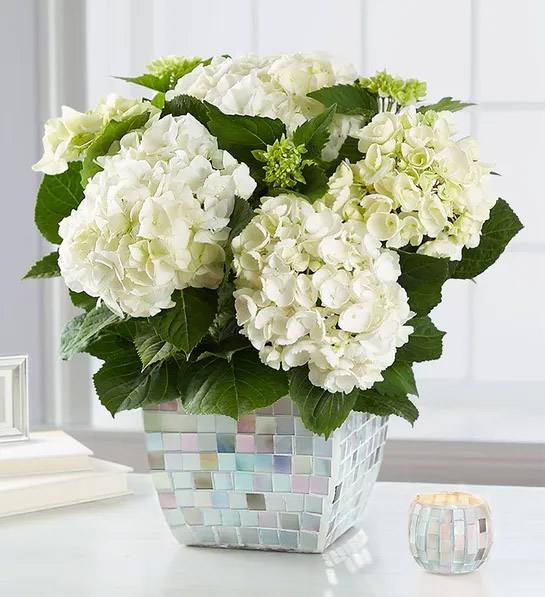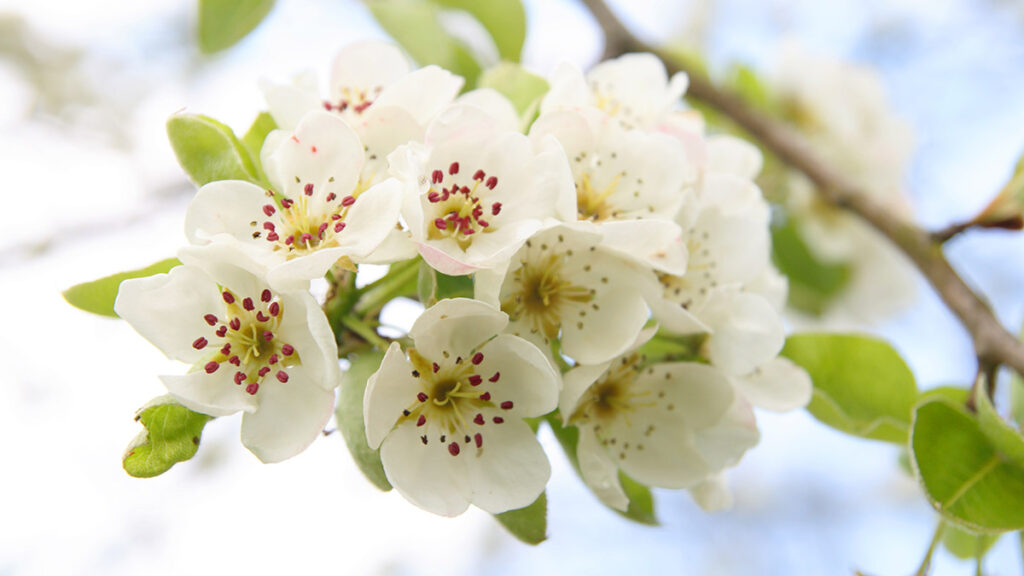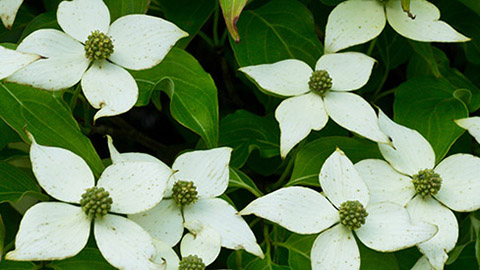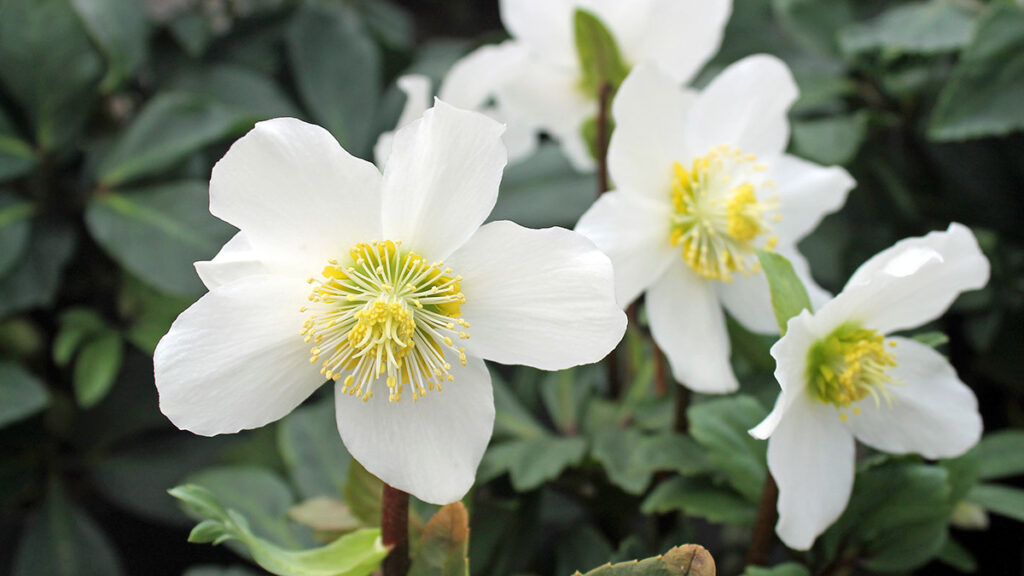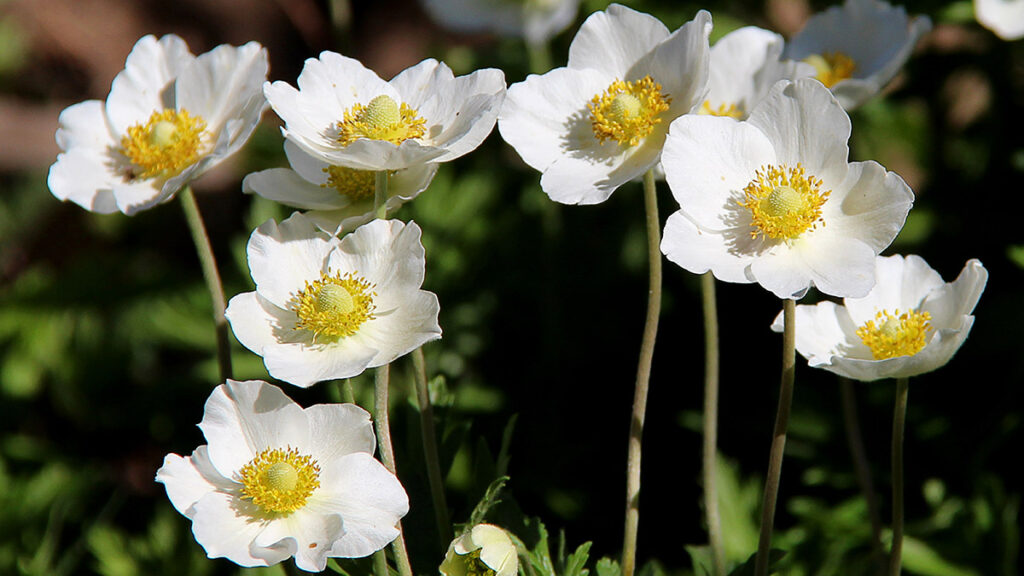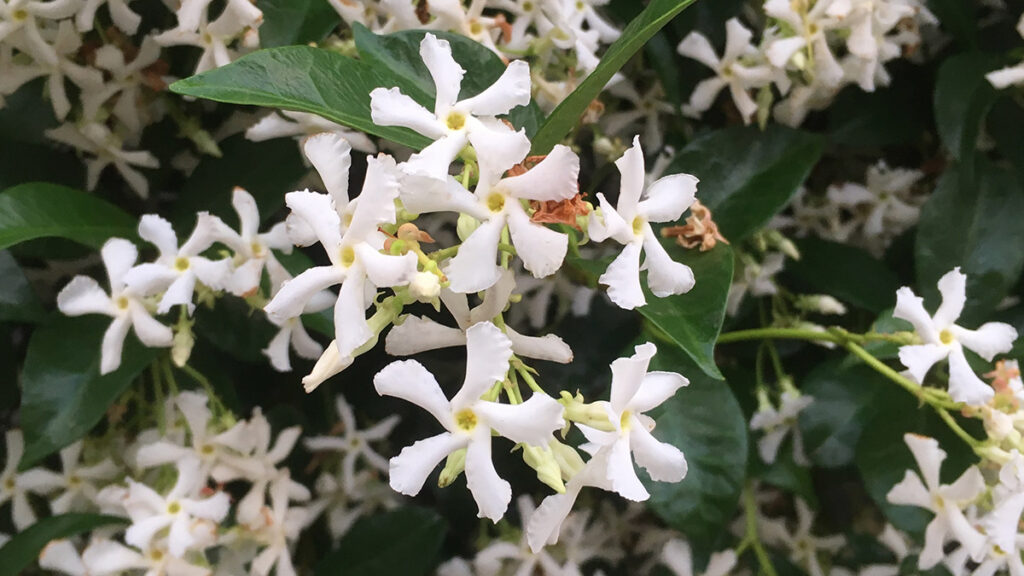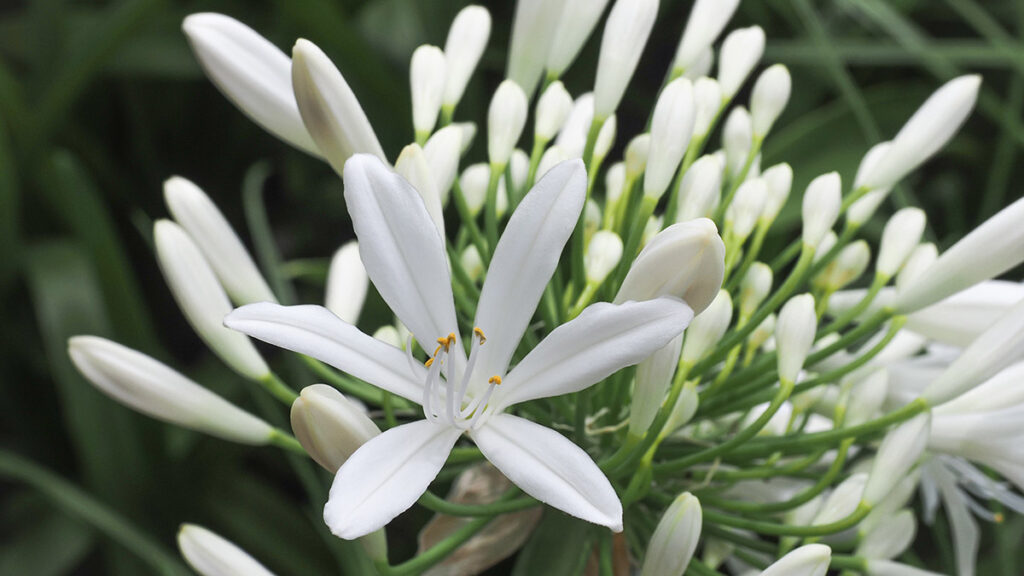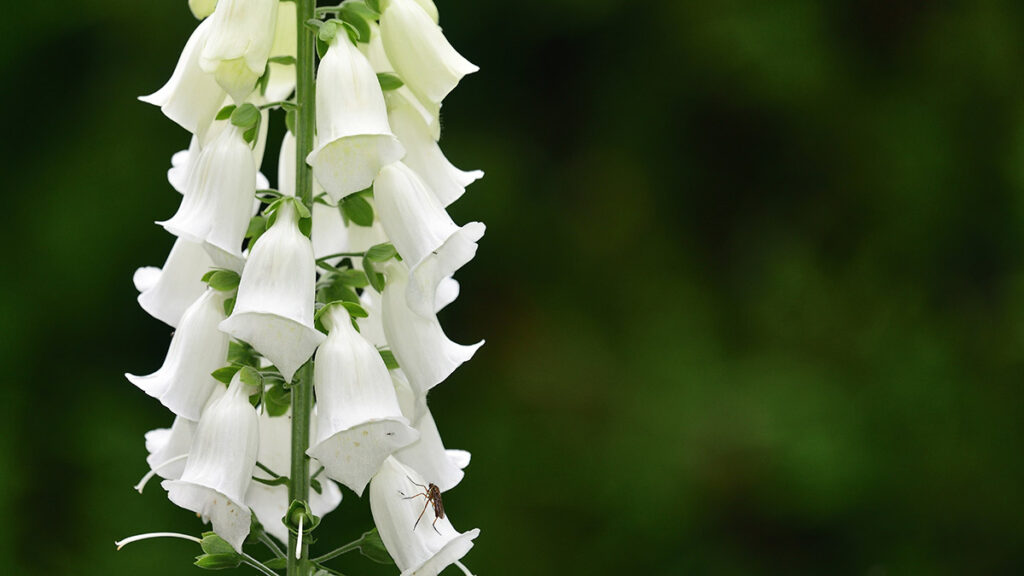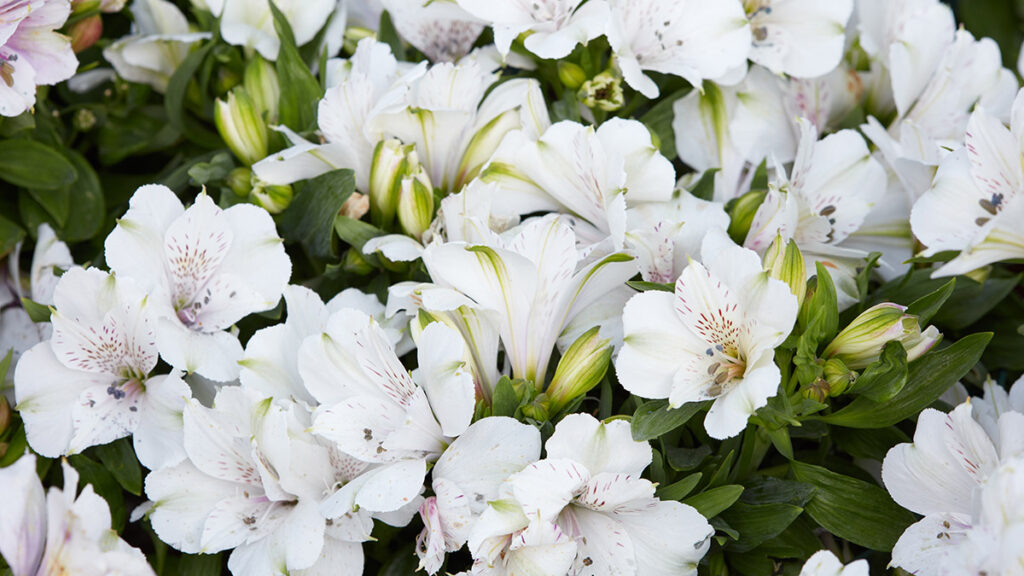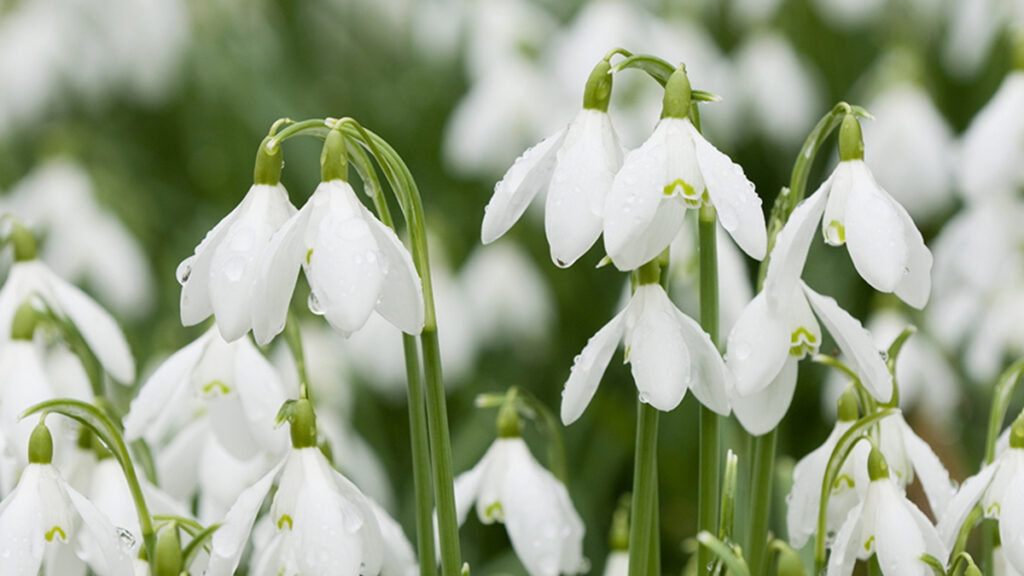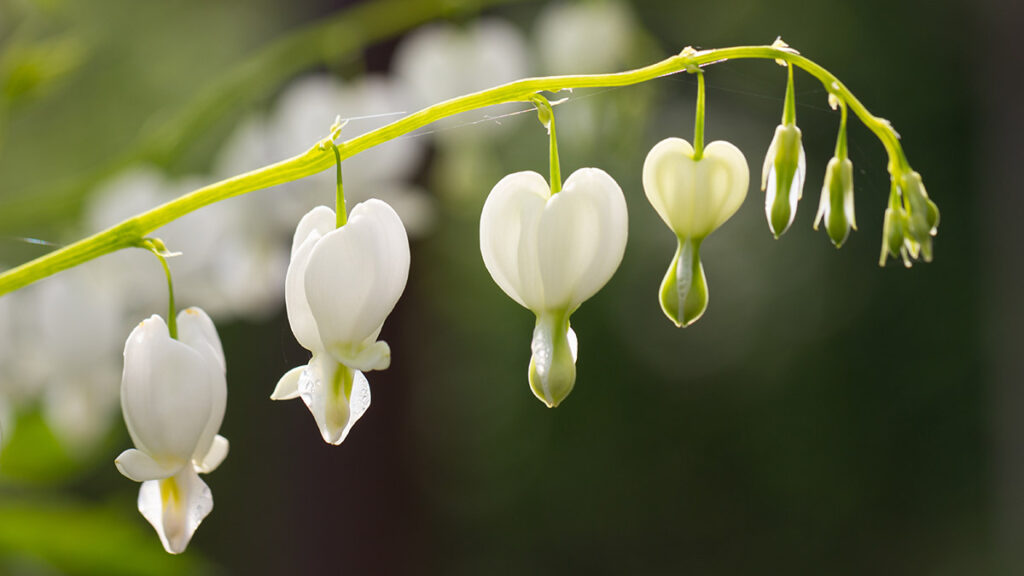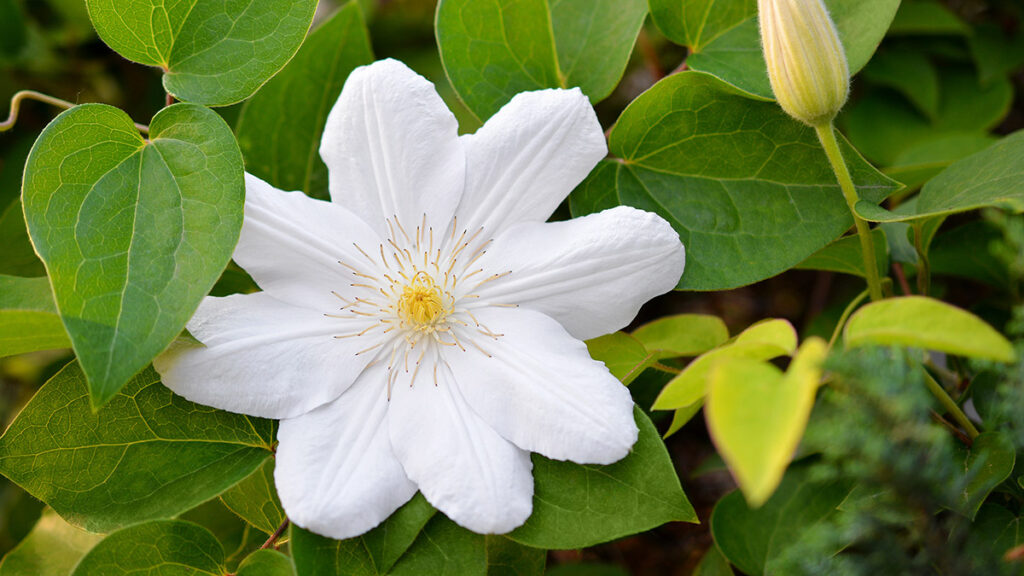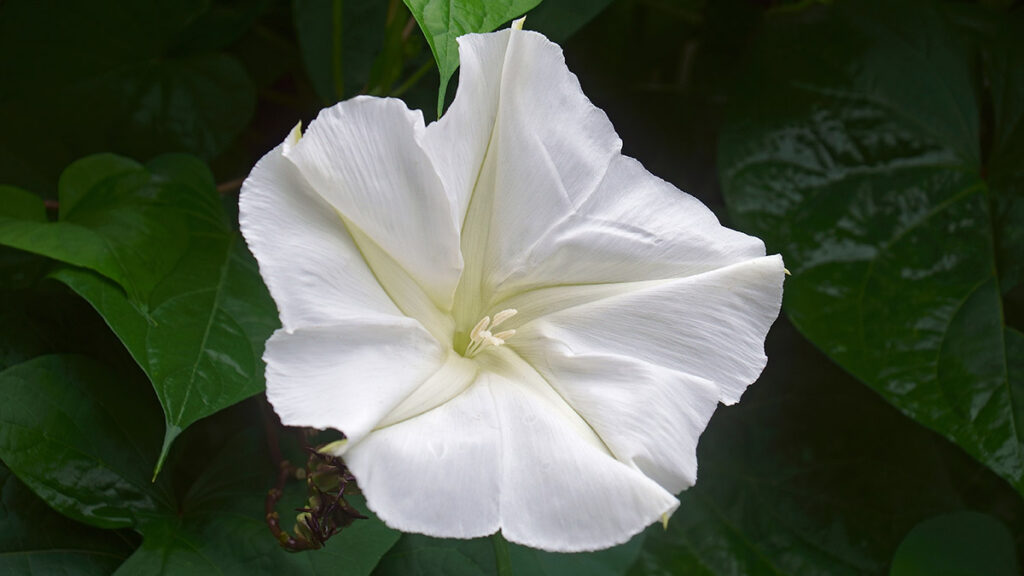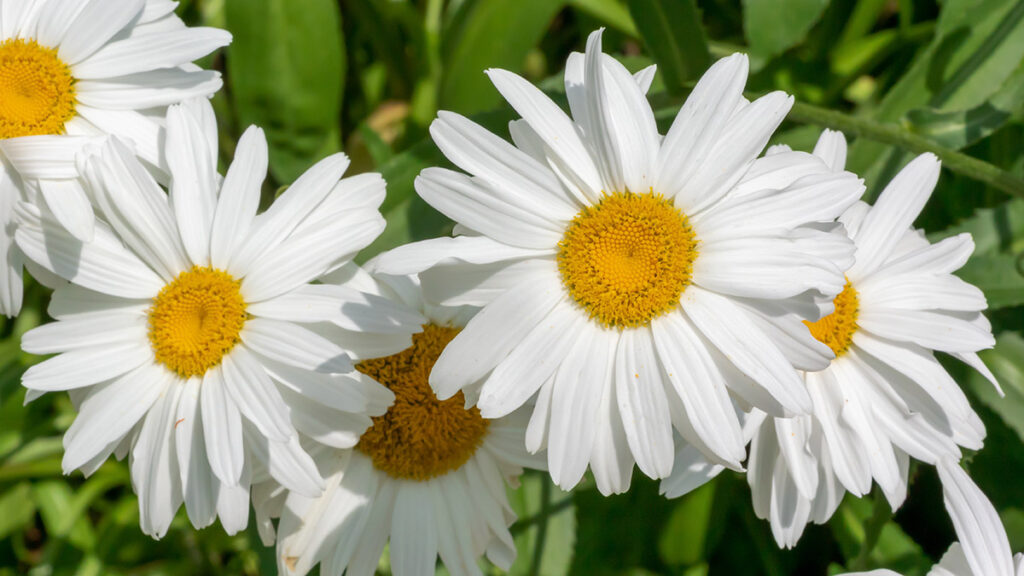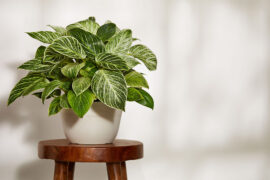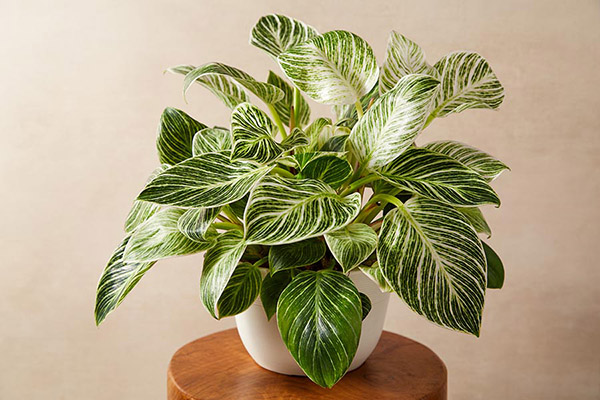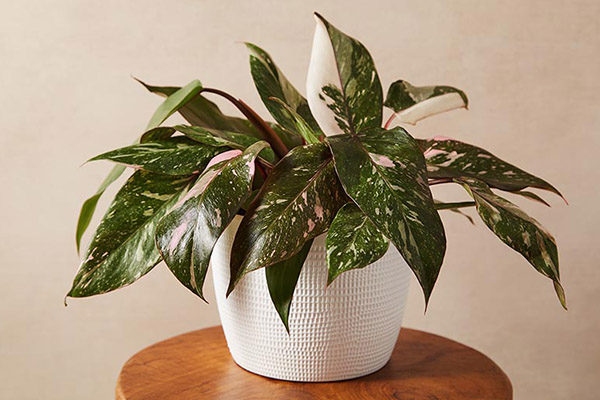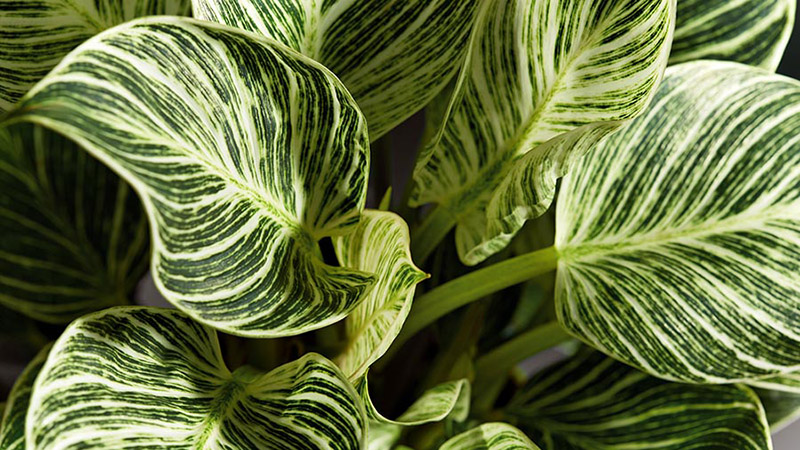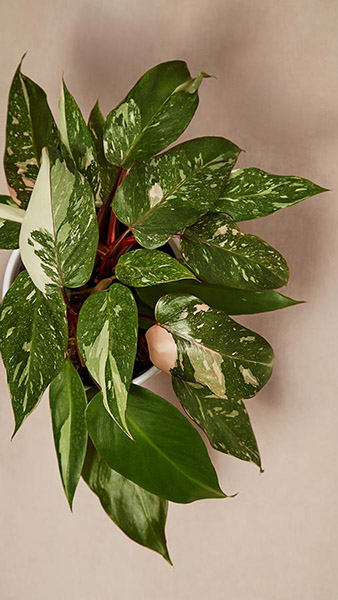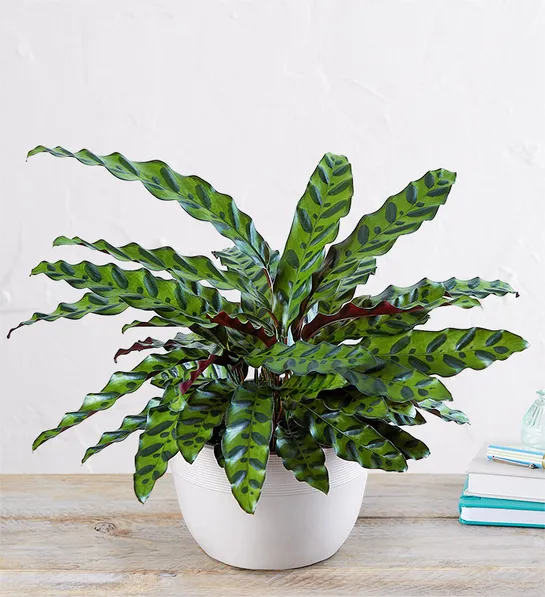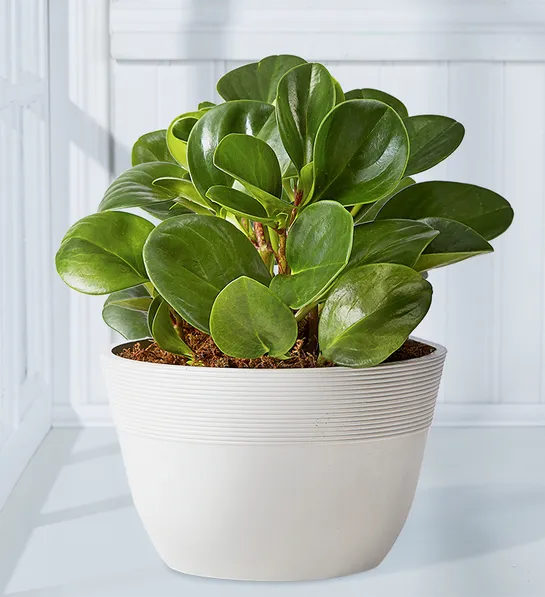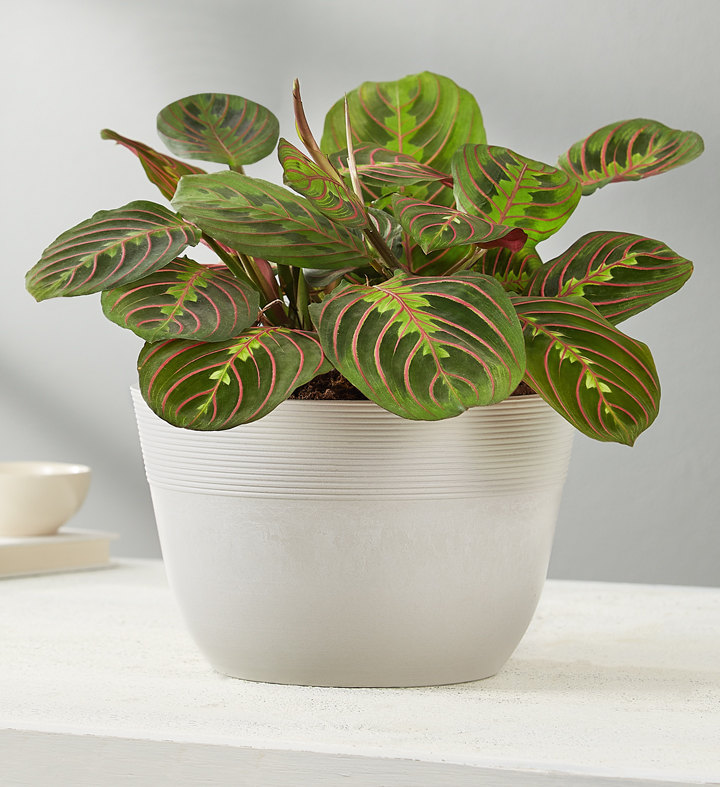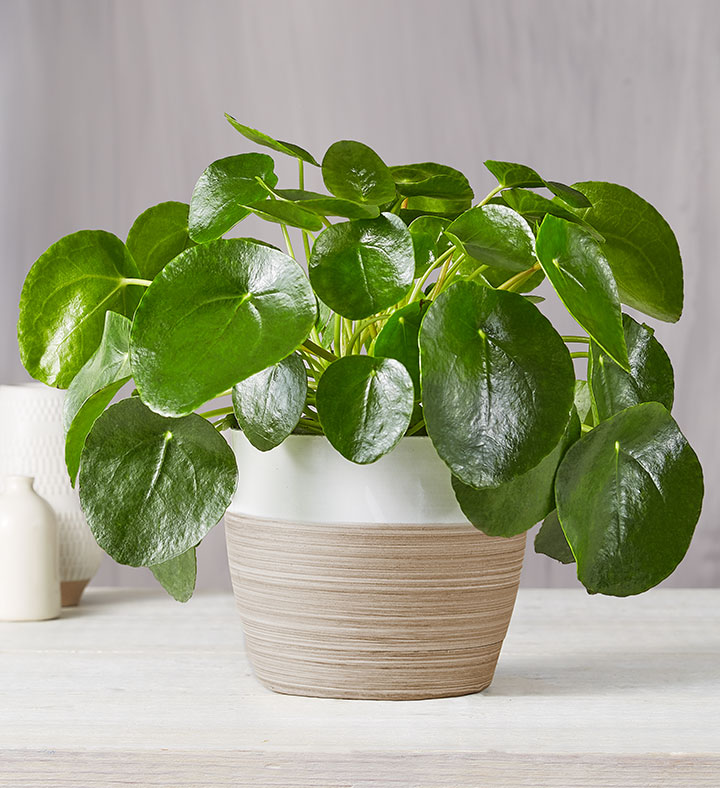In the vibrant world of flowers, red holds a special place — a color symbolizing love, passion, and energy. Whether in a garden or bouquet, red flowers demand attention and admiration, adding drama, intensity, and a touch of elegance to any setting in which they are found.
From the timeless beauty of roses to the wild charm of poppies and the intricate allure of dahlias, red flowers have a unique ability to captivate and inspire. If you want to create a thriving garden that showcases these crimson treasures, read on to learn more about the 25 most popular types of red flowers.
1. Rose (Rosa spp.)
The classic symbol of love, roses come in various shades of red, from deep velvety hues to bright scarlet tones. The flowers have a symmetrical, spiral arrangement of petals around a central disk. Most rose varieties have thorns ― modified stems or branches that protrude from the stems and help protect the plant from herbivores.
Sun exposure: Full sun
Soil needs: Well-draining, slightly acidic soil
USDA hardiness zones: 4-10
Bloom time: Spring to fall
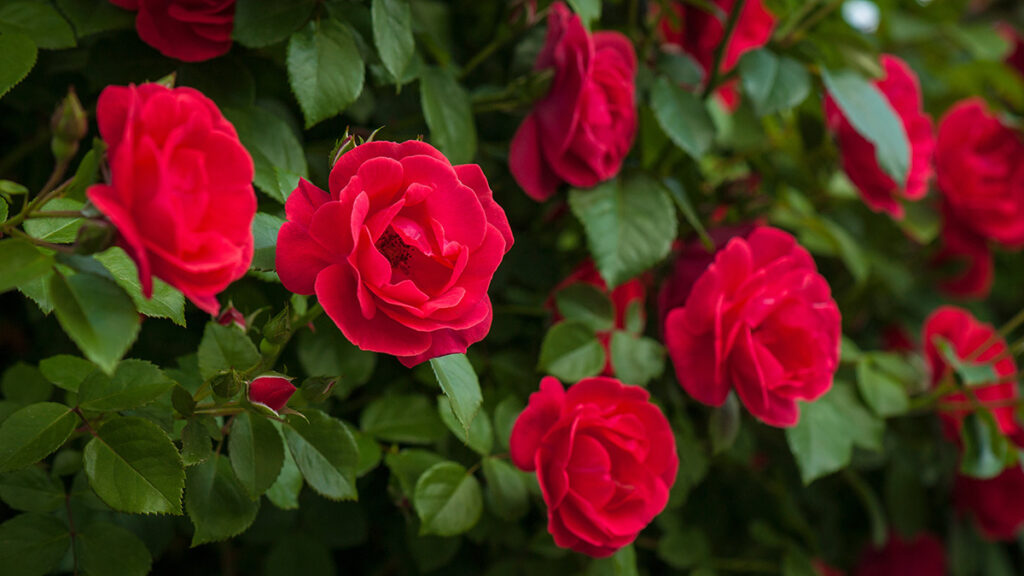
2. Tulip (Tulipa spp.)
Native to Central Asia but commonly associated with the Netherlands, tulips are perennial bulbous plants with distinctive cup-shaped blooms and vibrant colors. The bulbs from which these spring-blooming flowers grow store nutrients and energy, enabling the plant to survive dormant periods.
Sun exposure: Full sun to partial shade
Soil needs: Well-draining soil with a neutral pH
USDA hardiness zones: 3-8
Bloom time: Early to late spring
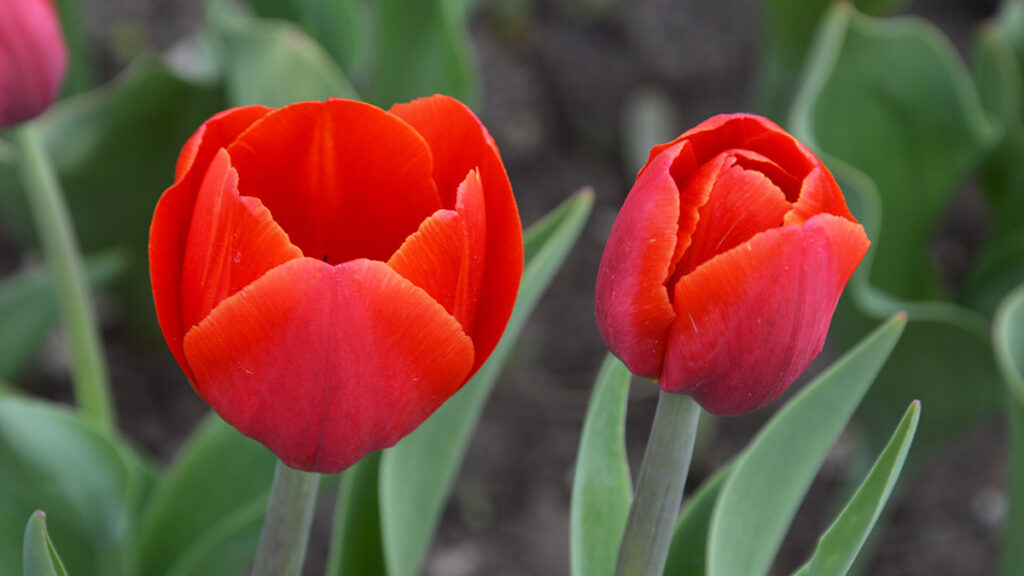
3. Poppy (Papaver spp.)
Poppies are marked by their delicate, paper-thin petals and colorful, bowl-shaped flowers. These vibrant blooms, which are one of August’s birth flowers, are often used in symbolic displays; the red poppy, in particular, is a symbol of remembrance for military personnel who have died in war, inspired by the famous World War I poem “In Flanders Fields.”
Sun exposure: Full sun
Soil needs: Well-draining, slightly alkaline soil
USDA hardiness zones: 3-9
Bloom time: Late spring to early summer
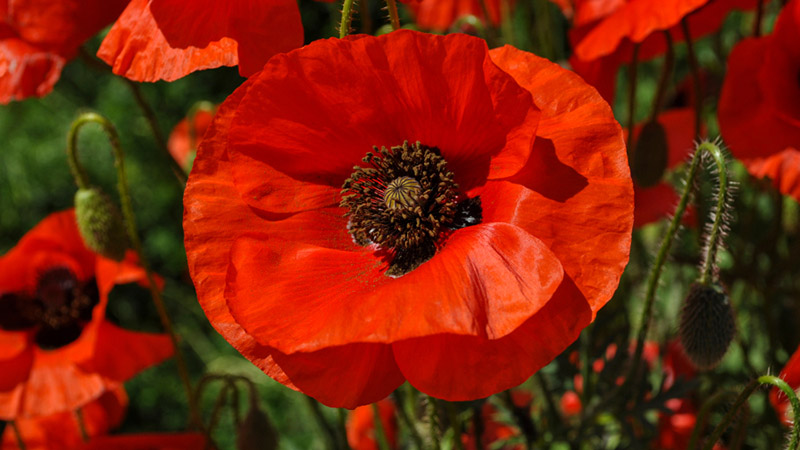
4. Geranium (Pelargonium spp.)
Geraniums comprise a diverse group of flowering plants that are widely cultivated for their attractive blossoms. Their five-petaled blooms are often saucer-shaped or have a funnel-like appearance, and grow in clusters. These hardy plants are known for their versatility and can thrive in many different of conditions.
Sun exposure: Full sun to part shade
Soil needs: Well-draining soil
USDA hardiness zones: 10-11 for perennial varieties; annuals can be grown in various zones
Bloom time: Late spring to early fall
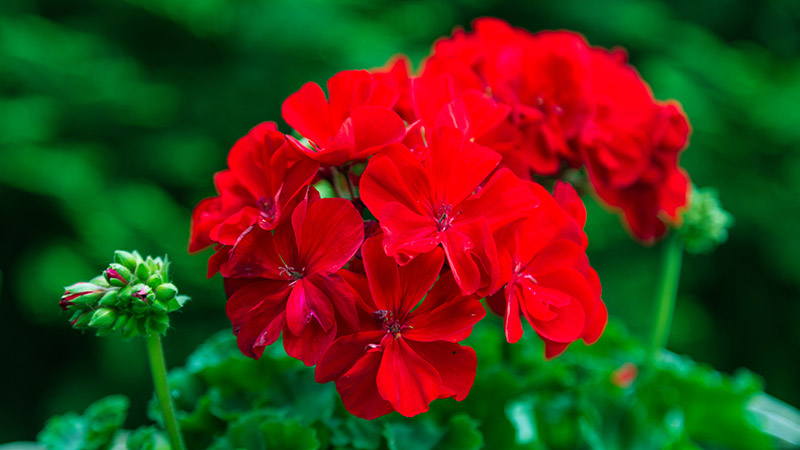
5. Dahlia (Dahlia spp.)
Dahlias are acclaimed for their diverse and intricate blooms, and the red varieties are particularly arresting. A popular choice for weddings, they offer a range of options, from small, pom-pom-like flowers to large, dinner plate-sized blossoms.
Sun exposure: Full sun
Soil needs: Well-draining, fertile soil
USDA hardiness zones: 8-11
Bloom time: Summer to frost
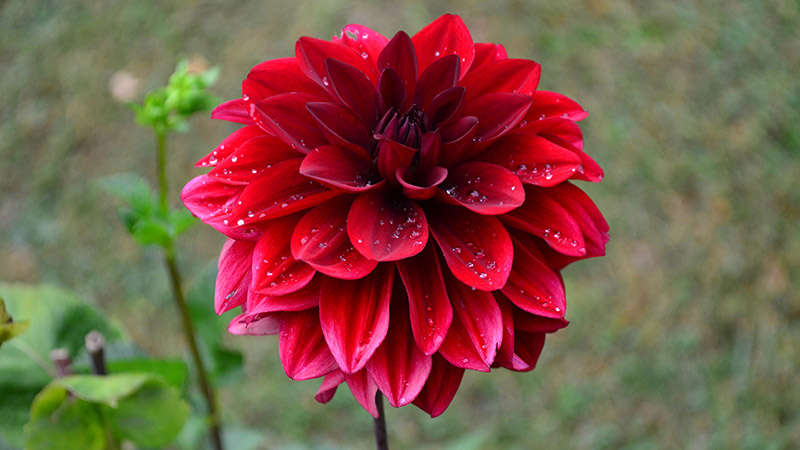
6. Poppy anemone (Anemone coronaria)
Commonly referred to as “windflowers” or simply “anemones,” poppy anemones are herbaceous perennials that boast vibrant and showy flowers. Their cup-shaped blooms and papery petals resemble those of poppies, hence their common name.
Sun exposure: Full sun to partial shade
Soil needs: Well-draining soil
USDA hardiness zones: 7-10
Bloom time: Late winter to early spring
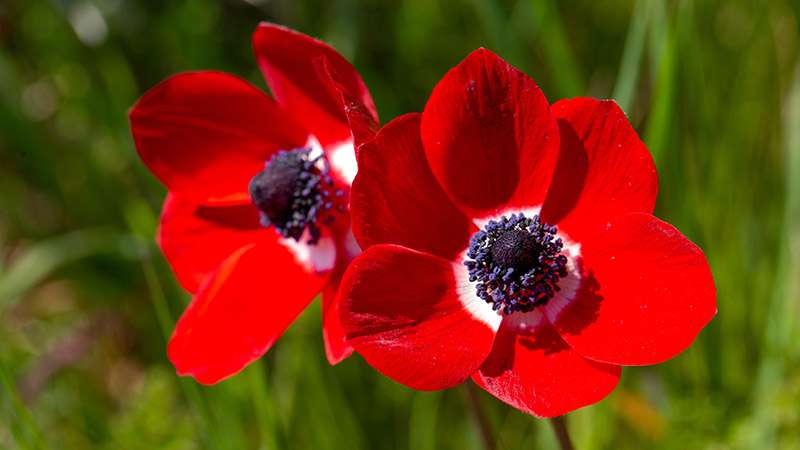
7. Begonia (Begonia spp.)
With their intricate petals, diverse and attractive foliage, and waxy texture, begonias make a stunning addition to any garden. Numerous species and hybrid varieties exist, including tuberous begonias, fibrous-rooted begonias, rex begonias, wax begonias, and rhizomatous begonias.
Sun exposure: Partial shade
Soil needs: Well-drained soil
USDA hardiness zones: 9-11
Bloom time: Summer months
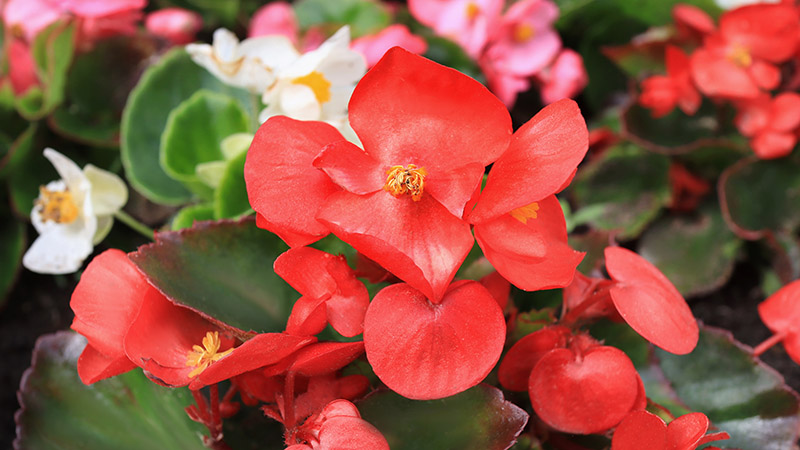
8. Asiatic lily (Lilium auratum)
Characterized by their vibrant, upward-facing flowers, relatively easy cultivation, and wide range of colors, Asiatic lilies herald the arrival of summer. Their blooms are typically bowl-shaped or flat, with distinct petals arranged in a star-like configuration.
Sun exposure: Full sun to partial shade
Soil needs: Well-draining soil enriched with organic matter
USDA hardiness zones: 4-8
Bloom time: Late spring to early summer
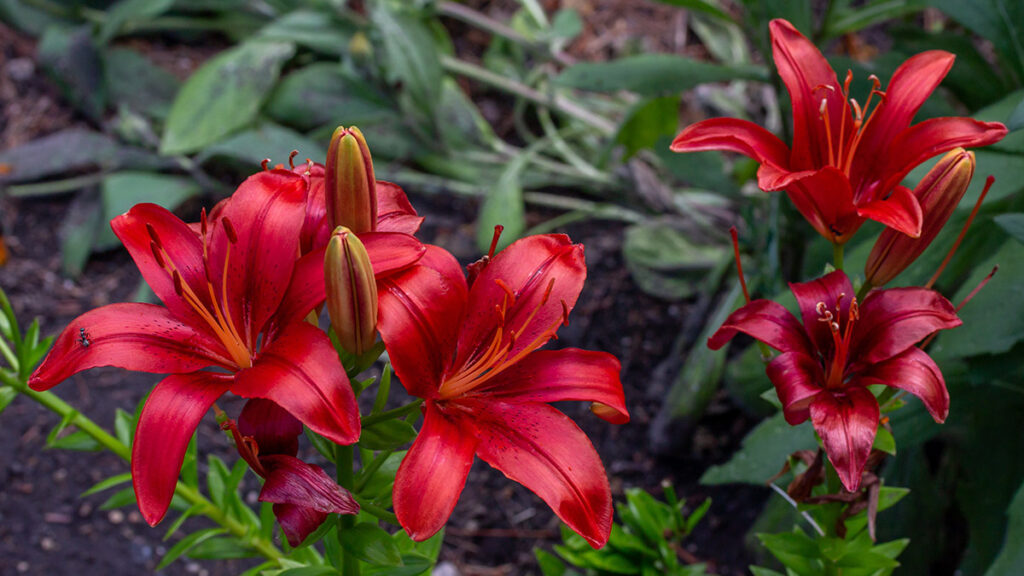
9. Amaryllis (Amaryllis)
The name “amaryllis” is commonly used to describe the South African genus Hippeastrum, which is renowned for its large, trumpet-shaped flowers. Amaryllis plants are popular for their striking blooms and often grown indoors as potted plants, though they can also be cultivated outdoors in suitable climates.
Sun exposure: Full sun to partial sun
Soil needs: Well-draining soil
USDA hardiness zones: 8-10
Bloom time: Late winter to early spring
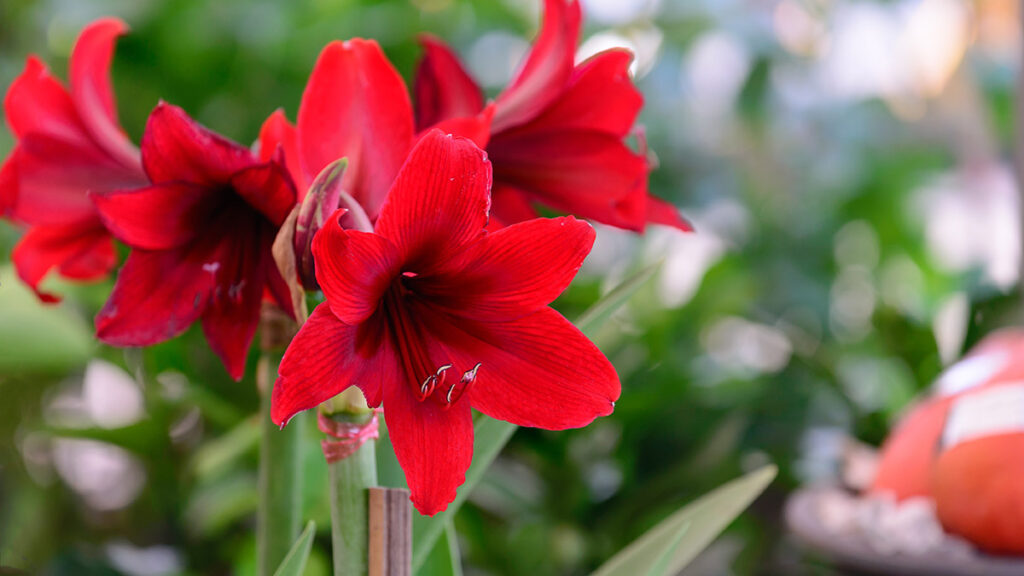
10. Zinnia (Zinnia elegans)
Zinnias are resilient annual flowering plants with bright and vibrant blooms, making them a popular choice for gardens, landscapes, and floral arrangements. They are known for having a prolonged flowering season, lasting from late spring or early summer until the first frost in fall.
Sun exposure: Full sun
Soil needs: Well-draining soil
USDA hardiness zones: 3-10
Bloom time: Late spring to early fall
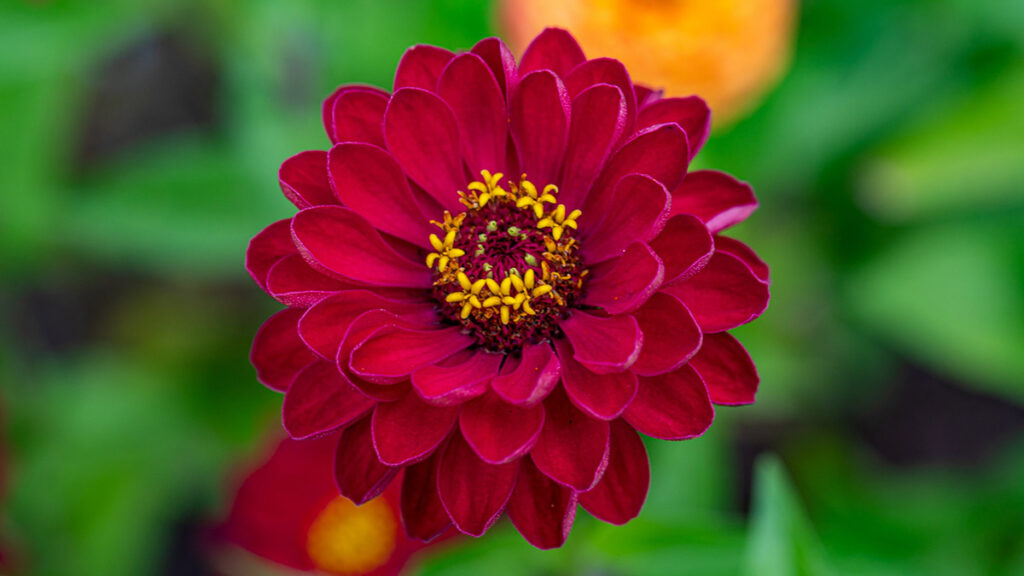
11. Hibiscus (Hibiscus spp.)
Hibiscus species are found in various parts of the world, and are commonly cultivated for ornamental purposes, as well as for their cultural and culinary uses. Their most distinctive feature is their large, trumpet-shaped flowers, which have five petals and a prominent central staminal column.
Sun exposure: Full sun
Soil needs: Well-draining soil
USDA hardiness zones: 9-11
Bloom time: Late spring to fall
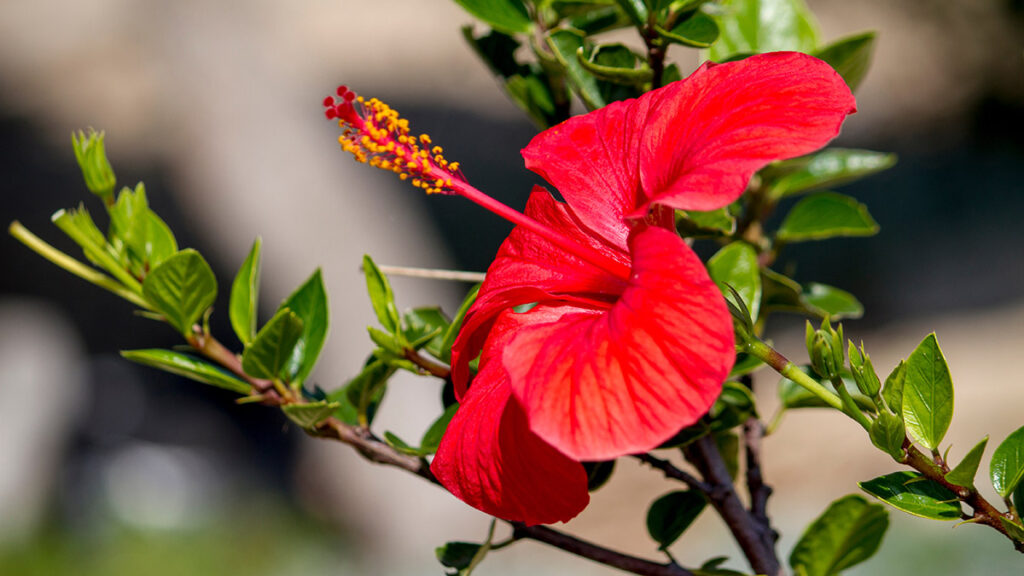
12. Chrysanthemum (Chrysanthemum spp.)
Often referred to simply as “mums,” chrysanthemums are native to Asia and northeastern Europe, and are renowned for their attractive, daisy-like flowers. They are available in many varieties and cultivars, including garden mums, florist mums, and cushion mums.
Sun exposure: Full sun
Soil needs: Well-drained soil
USDA hardiness zones: 5-9
Bloom time: Fall
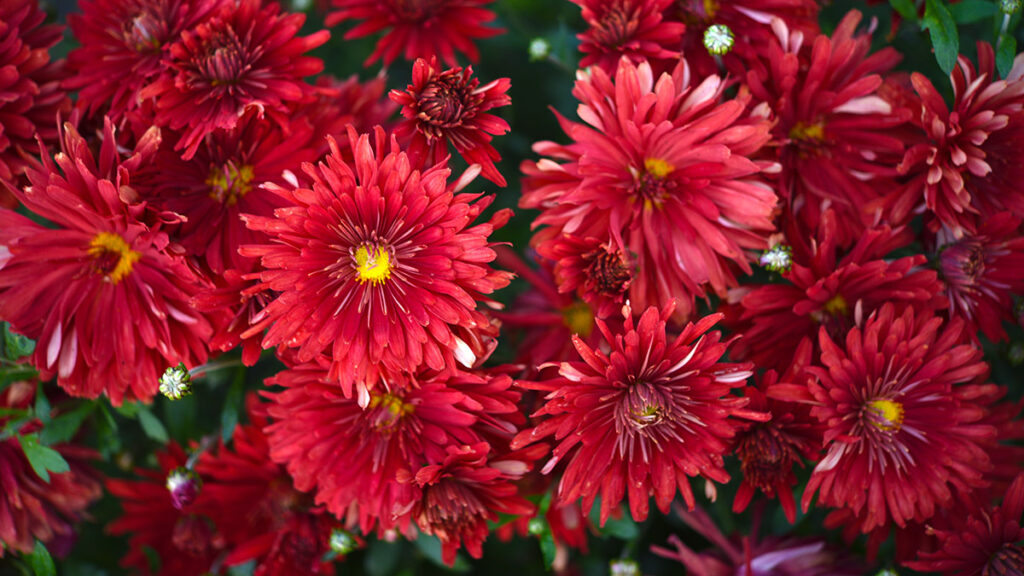
Red flower gift ideas
13. Alstroemeria (Alstroemeria spp.)
Commonly referred to as Peruvian lily or lily of the Incas, alstroemeria is a genus of flowering plants native to South America, particularly the Andes regions. The flowers of the alstroemeria are unique and distinctive, featuring trumpet-shaped blooms with six petal-like tepals (the modified leaves that make up the outer part of the flower).
Sun exposure: Full sun to partial shade
Soil needs: Well-draining soil
USDA hardiness zones: 7-10
Bloom time: Summer
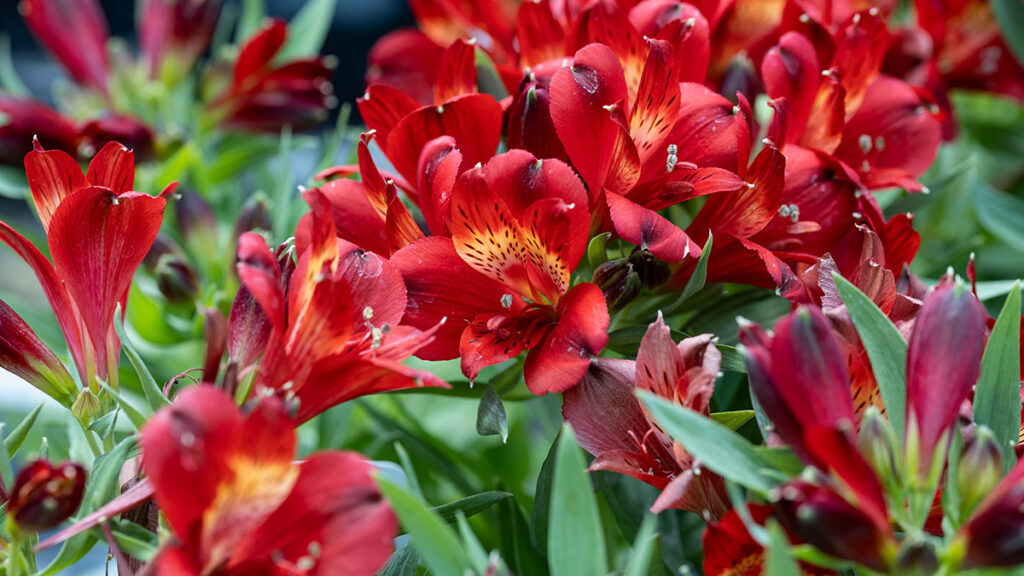
14. Marigold (Tagetes)
Marigolds are vibrant and cheerful flowers that have dense, pom-pom-like heads with multiple layers of petals. Their colors can range from yellow and orange to deep red. Common varieties include African marigolds (Tagetes erecta) and French marigolds (Tagetes patula).
Sun exposure: Full sun
Soil needs: Well-draining soil
USDA hardiness zones: 2-11
Bloom time: Late spring to fall
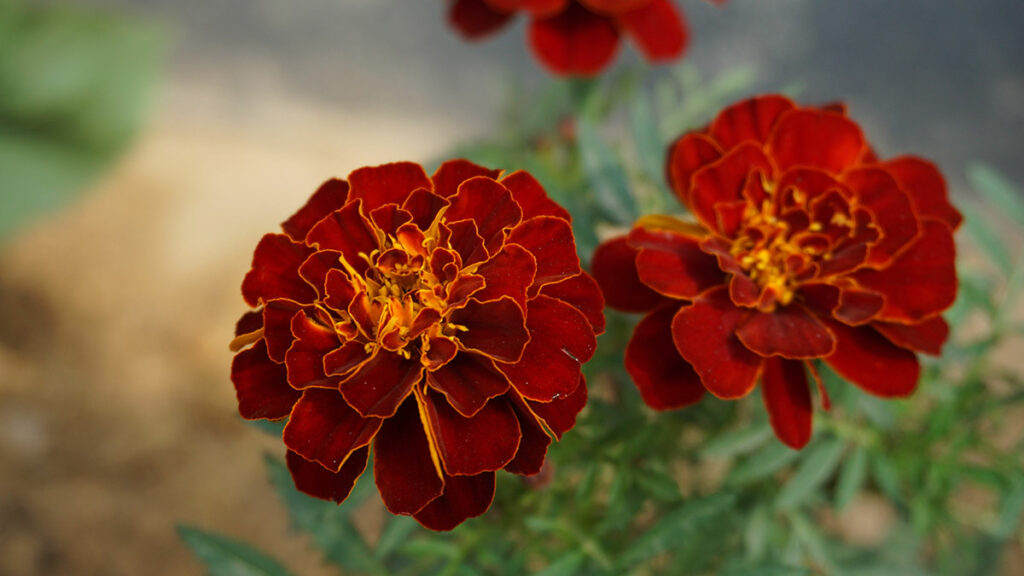
15. Celosia (Celosia spp.)
These plants, which are native to various tropical and subtropical regions around the world, are identified by their distinctive, brightly colored flower heads that resemble flames or cockscombs, giving them the common names “cockscomb” or “woolflowers.” The flower heads of celosia can vary in shape and size, with some resembling upright plumes or spikes and others having a more flattened appearance.
Sun exposure: Full sun
Soil needs: Well-draining soil
USDA hardiness zones: 9-11
Bloom time: Summer to fall
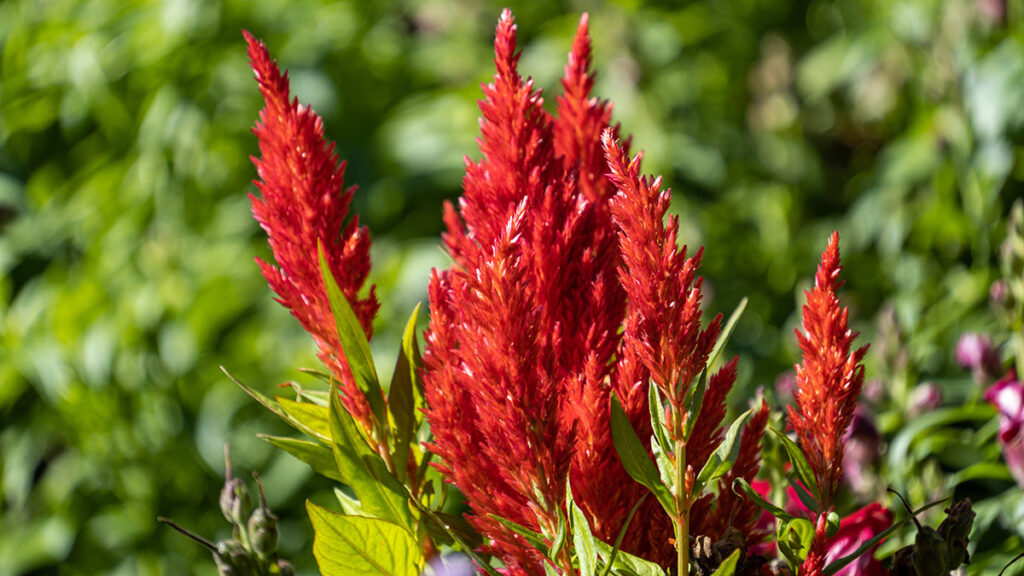
16. Azalea (Rhododendron spp.)
Azalea is a flowering shrub characterized by their stunning and often fragrant flowers. Their blooms are typically funnel-shaped, with some varieties sporting double flowers. Azaleas are closely related to rhododendrons, and they can be either evergreen or deciduous, depending on the species and variety.
Sun exposure: Partial shade
Soil needs: Well-drained soil
USDA hardiness zones: 5-8
Bloom time: Spring
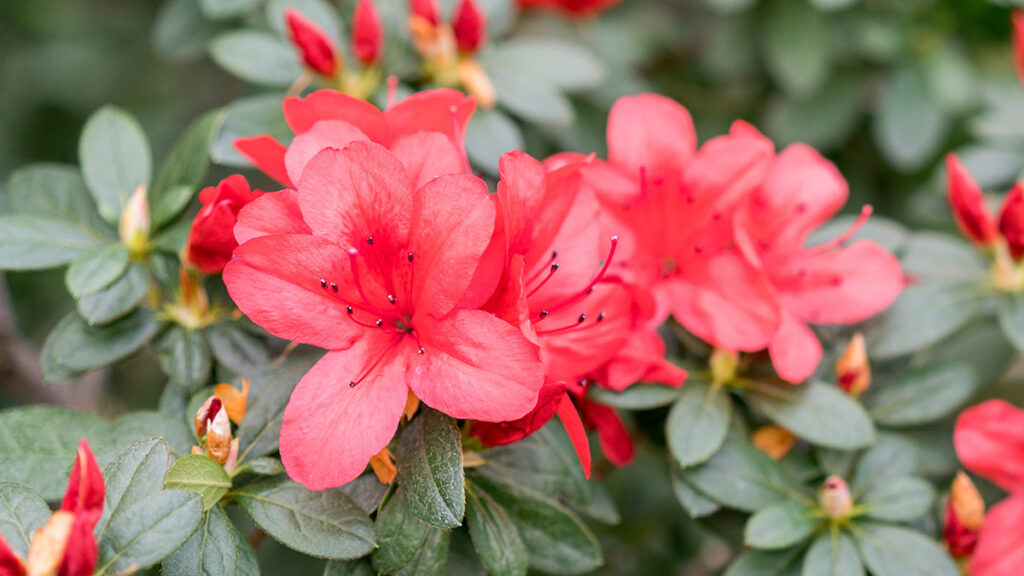
17. Salvia (Salvia spp.)
Commonly known as sage, salvia is a large and diverse genus of flowering plants in the mint family. Salvia plants feature aromatic foliage and often have tubular flowers that attract pollinators, especially bees and hummingbirds. The colors of the flowers can vary widely and include shades of blue, purple, red, pink, white, and orange.
Sun exposure: Full sun
Soil needs: Well-draining soil
USDA hardiness zones: 3-9
Bloom time: Late spring to early fall
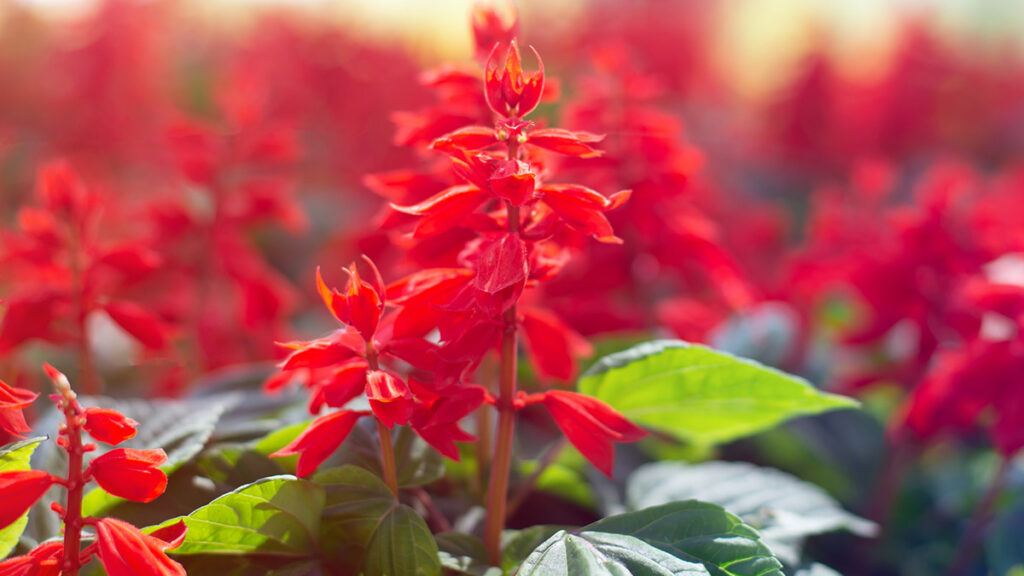
18. Dianthus (Dianthus spp.)
Dianthus is a genus of flowering plants in the Caryophyllaceae family, which includes a wide variety of species commonly referred to as carnations, pinks, and sweet Williams. These plants are identified by their attractive, five-petaled flowers that have a distinctive fringed or serrated edge, as well as their sweet and spicy fragrance.
Sun exposure: Full sun
Soil needs: Well-drained soil
USDA hardiness zones: 3-9
Bloom time: Summer
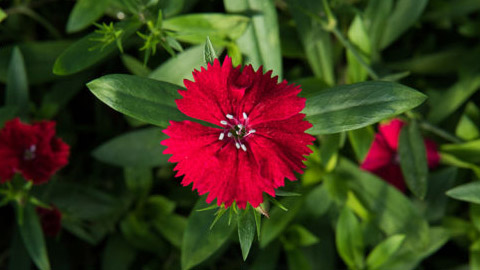
19. Peony (Paeonia)
The peony, the 2024 Flower of the Year, is a herbaceous perennial plant and shrub distinguished by its large, showy, and often fragrant flowers, which can reach diameters of 6 inches or more. Peonies can be classified into three main forms: herbaceous peonies, tree peonies, and intersectional peonies.
Sun exposure: Full sun to partial shade
Soil needs: Well-draining soil
USDA hardiness zones: 3-8
Bloom time: Late spring to early summer
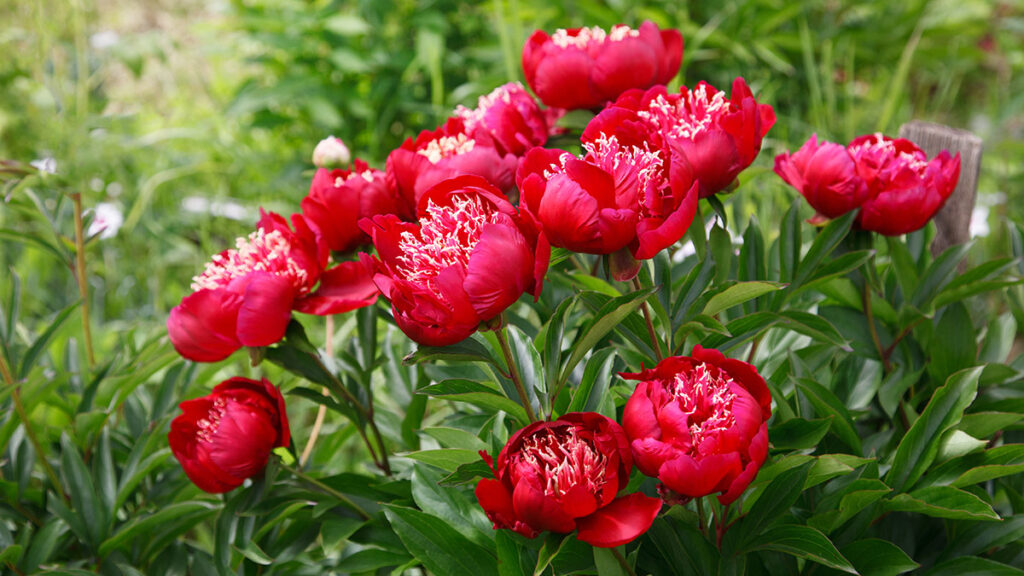
20. Calla lily (Zantedeschia)
These flowering plants are native to southern Africa and are known for their trumpet-shaped, hood-like flowers. While commonly referred to as lilies, calla lilies are not true lilies but instead belong to the Araceae family. Their elegant and distinctive appearance makes them a popular choice for floral arrangements, bridal bouquets, and weddings.
Sun exposure: Full sun to partial shade
Soil needs: Well-draining soil
USDA hardiness zones: 8-11
Bloom time: Summer
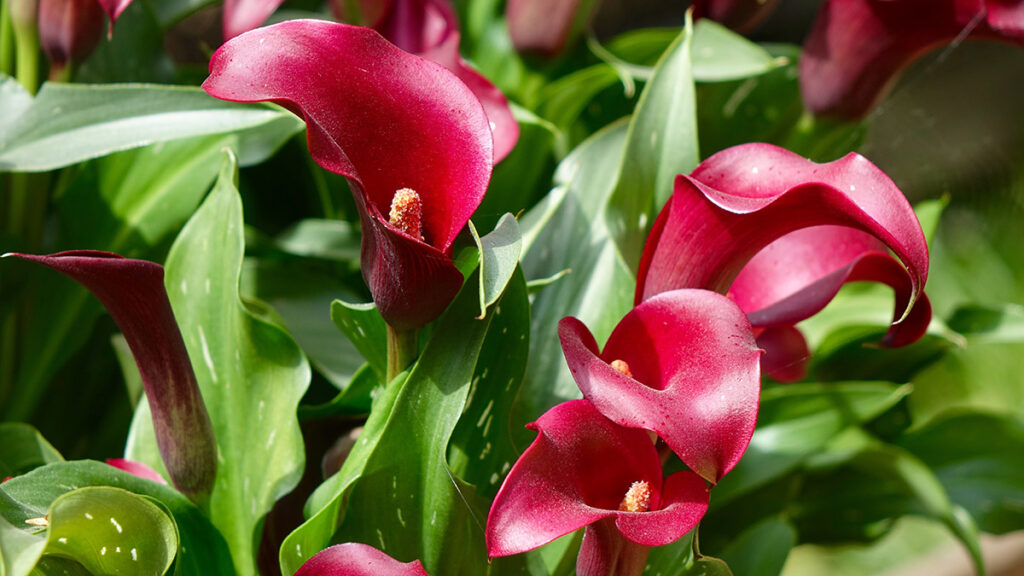
21. Petunia (Petunia spp.)
Native to South America, particularly Argentina and Uruguay, petunias are widely cultivated for their colorful and trumpet-shaped flowers. These annual plants are especially popular because of their versatility, ease of care, and prolific blooming, making them a favorite choice for gardens, hanging baskets, and containers.
Sun exposure: Full sun
Soil needs: Well-draining soil
USDA hardiness zones: 9-11
Bloom time: Late spring to early fall
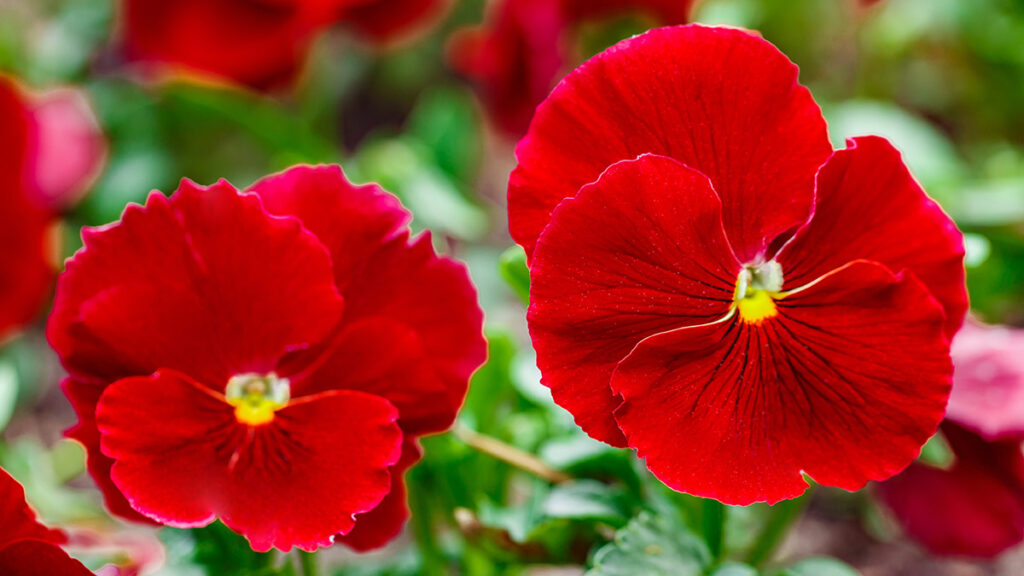
22. Cardinal flower (Lobelia cardinalis)
Cardinal flowers are striking perennial plants native to North America that sport vivid red tubular flowers. They are commonly found in wetlands, along streams, and in other moist habitats. The flowers are arranged in spikes atop tall stems and are highly attractive to hummingbirds and butterflies.
Sun exposure: Full sun to partial shade
Soil needs: Well-drained soil
USDA hardiness zones: 3-9
Bloom time: Late summer to early fall
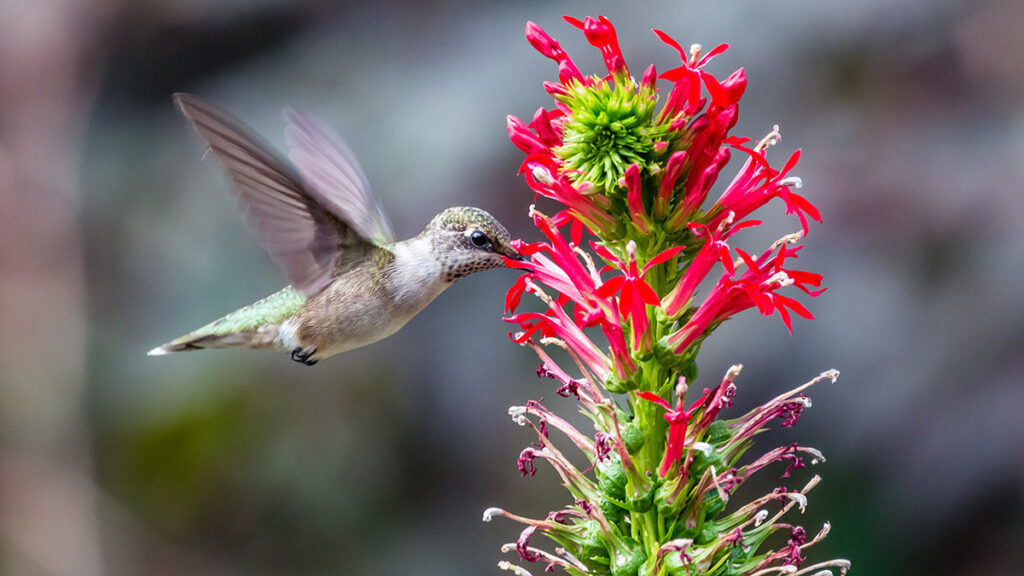
23. Coneflower (Echinacea)
Herbaceous perennial plants belonging to the genus Echinacea, coneflowers are known for their distinctive daisy-like flowers with prominent, raised central cones. They are valued for their resilience, long bloom periods, and attractiveness to pollinators.
Sun exposure: Full sun to partial shade
Soil needs: Well-drained soil
USDA hardiness zones: 3-9
Bloom time: Mid-summer to fall
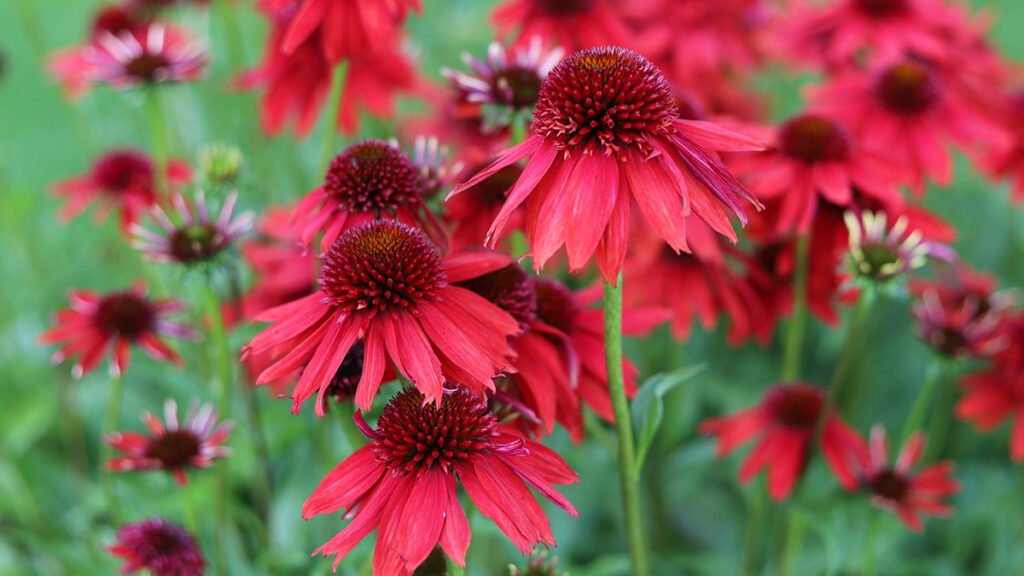
24. Ranunculus (Ranunculus spp.)
Commonly known as buttercups, these herbaceous plants are prized for their showy and colorful flowers, which have layers of delicate, petal-like structures that resemble tissue paper. The cup-like shape of their blooms causes ranunculus to sometimes be mistaken for peonies or roses.
Sun exposure: Full sun
Soil needs: Well-drained soil
USDA hardiness zones: 8-10
Bloom time: Spring
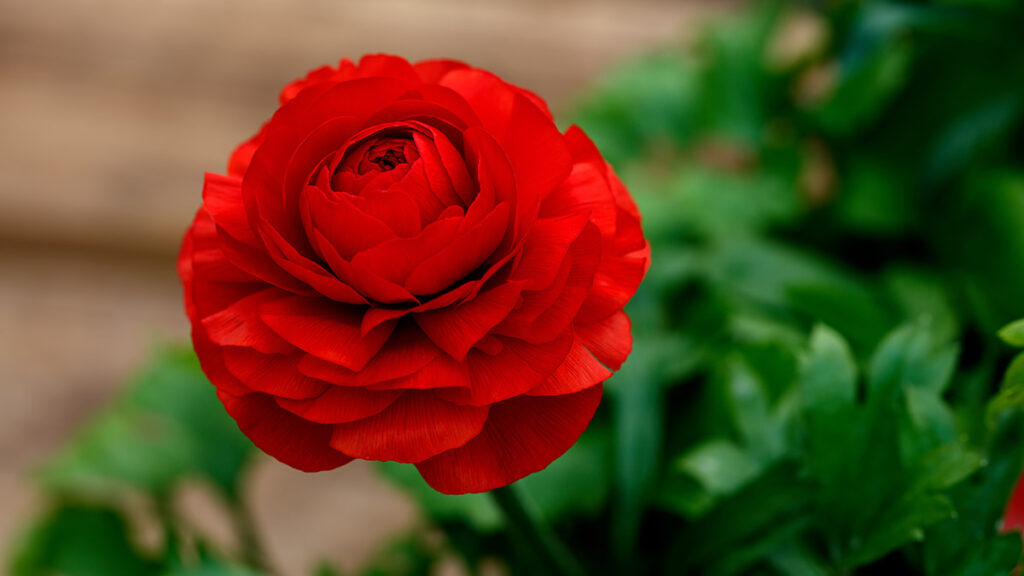
25. Pentas (Pentas spp.)
Pentas is a popular ornamental plant native to Africa that is prized for its clusters of small, star-shaped flowers and attractiveness to butterflies and other pollinators. The most commonly cultivated species of pentas is Pentas lanceolata, also known as Egyptian star cluster or star flower.
Sun exposure: Full sun to partial shade
Soil needs: Well-drained soil
USDA hardiness zones: 10-11
Bloom time: Spring to fall
